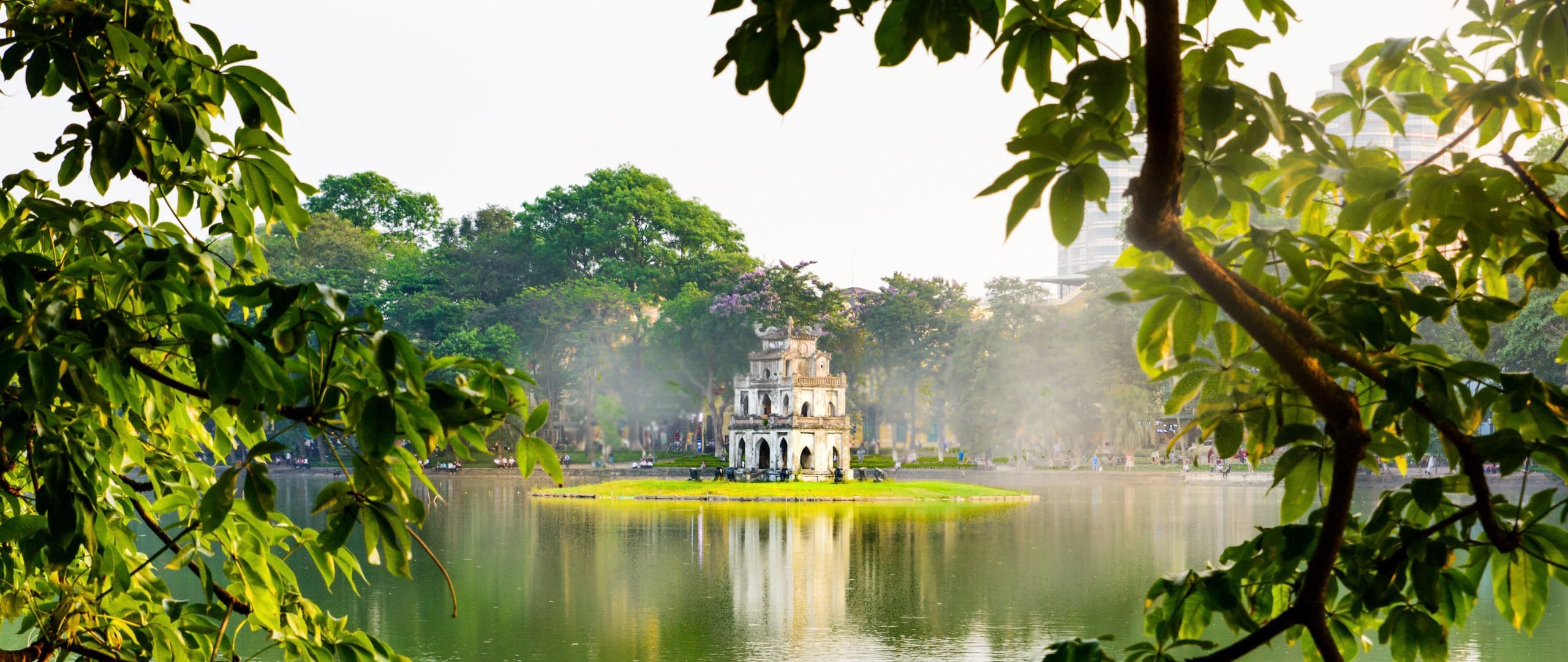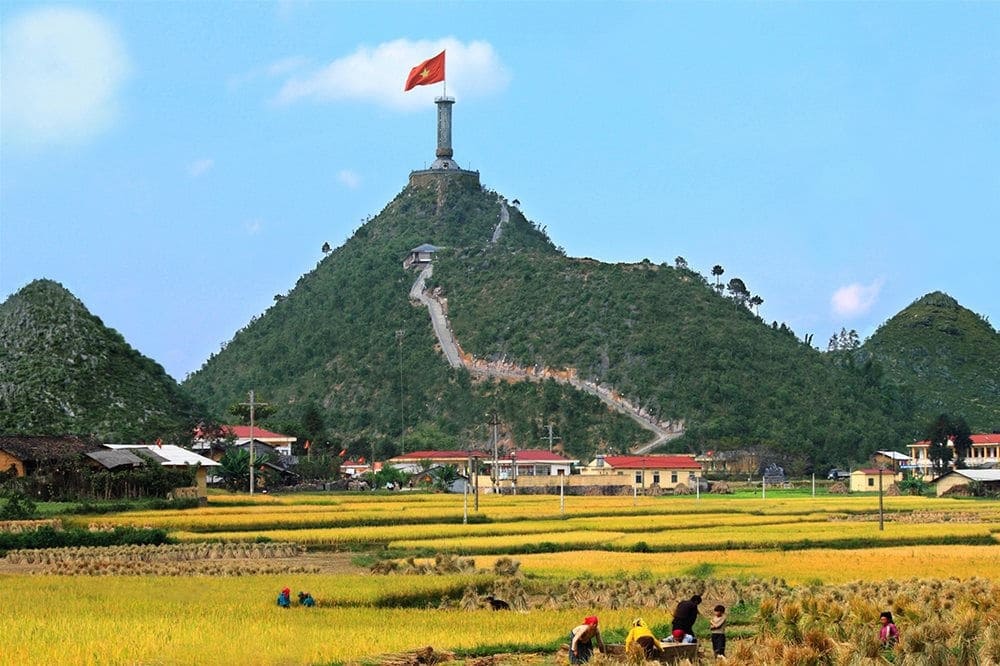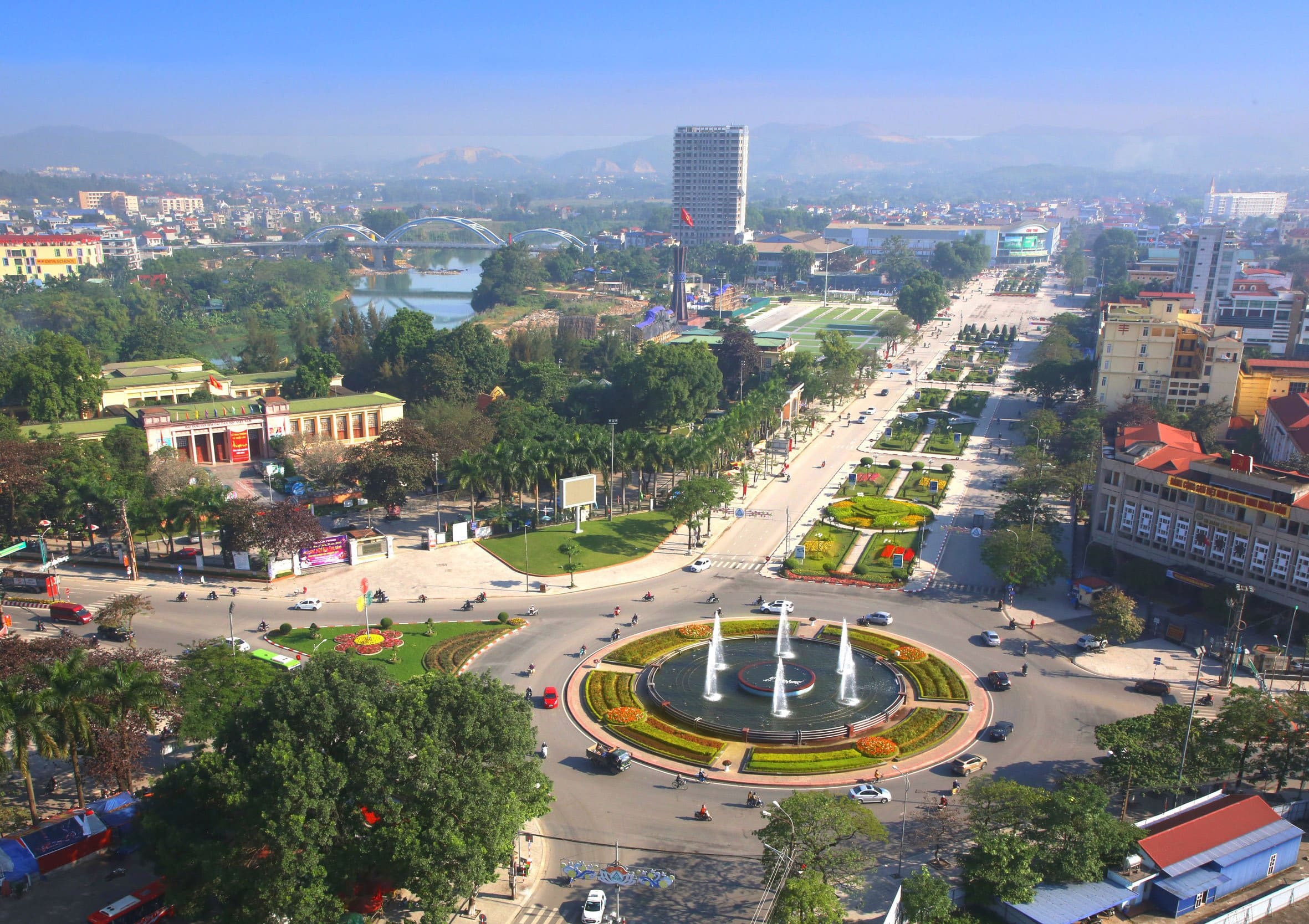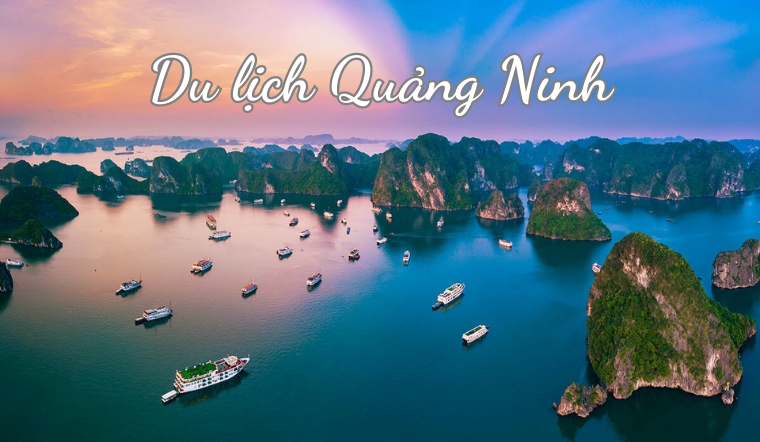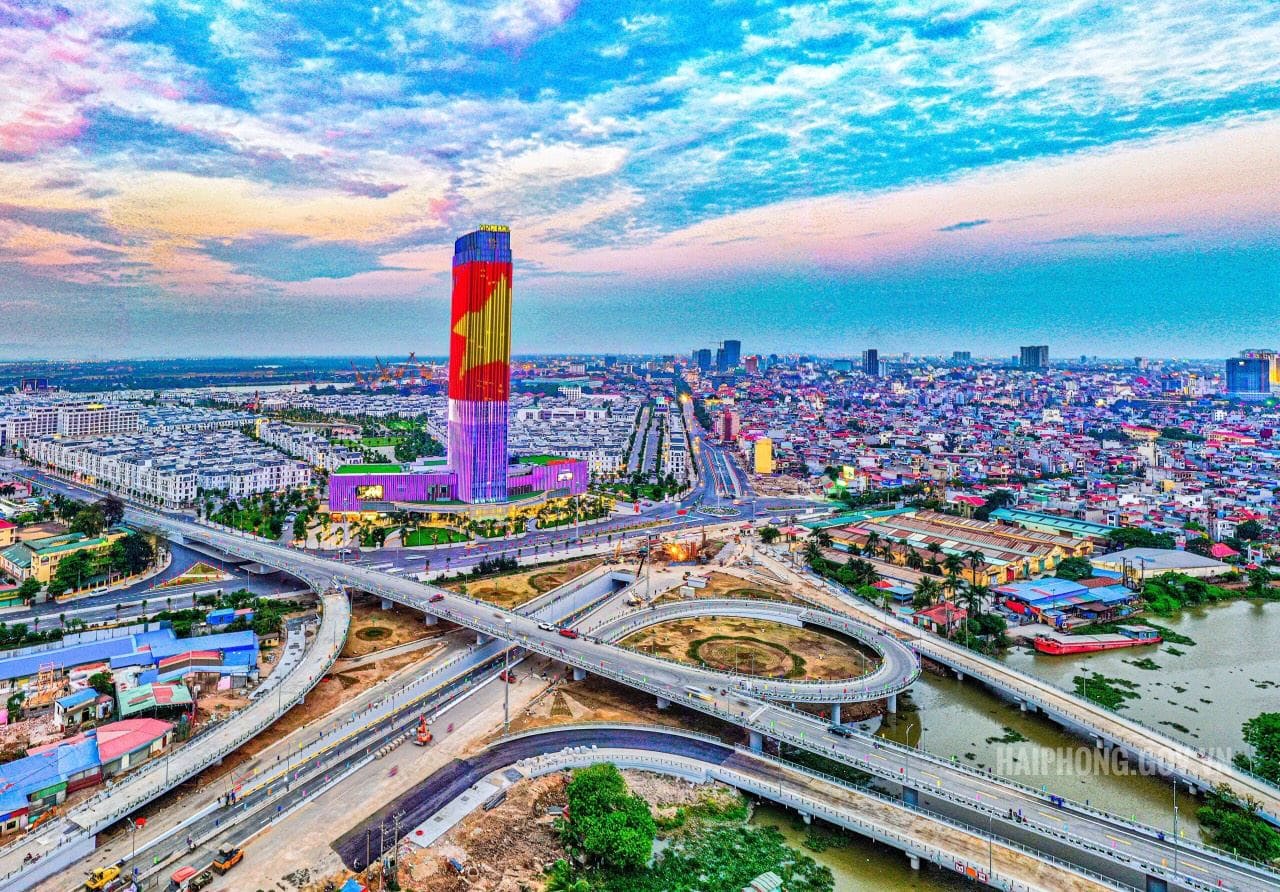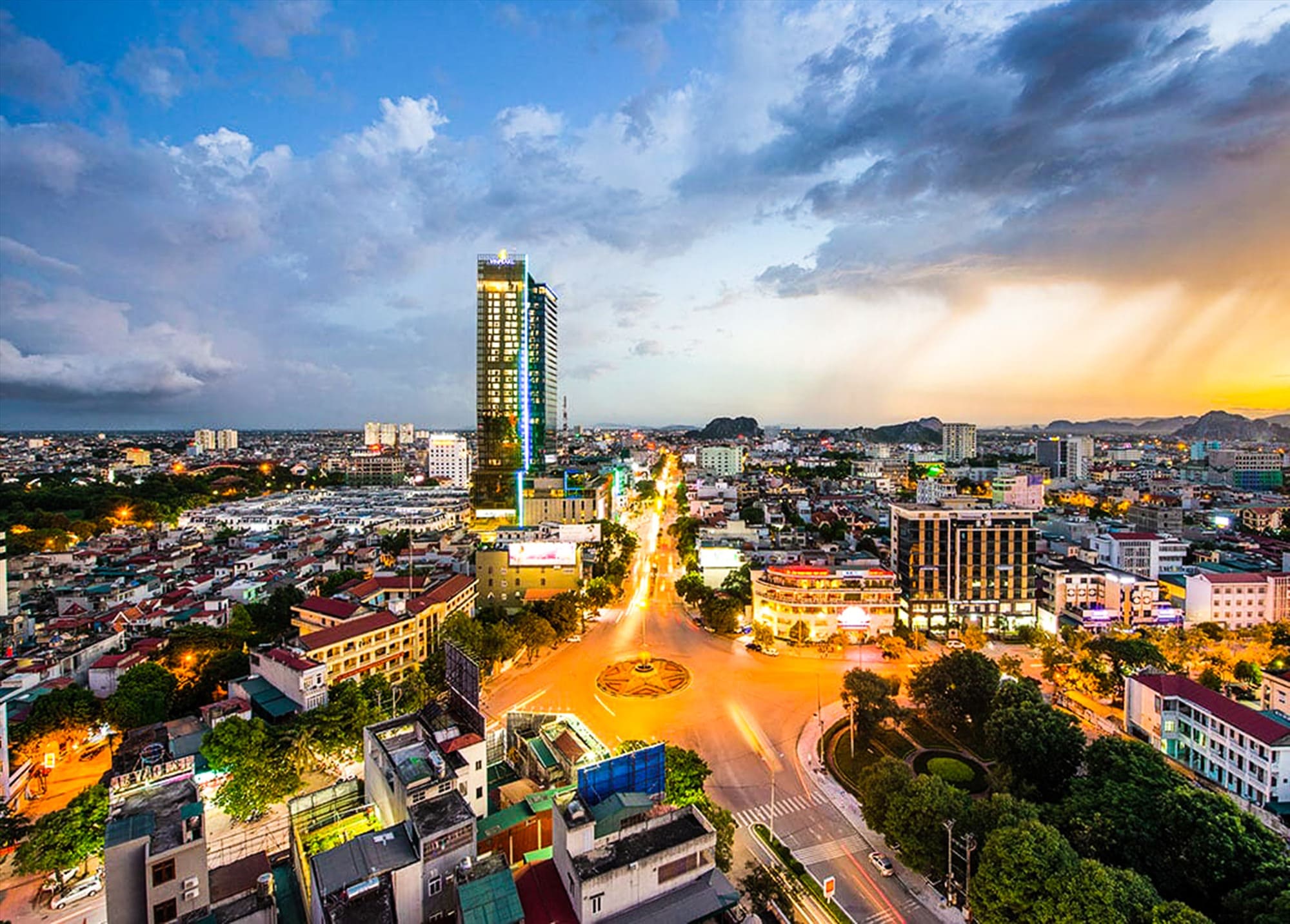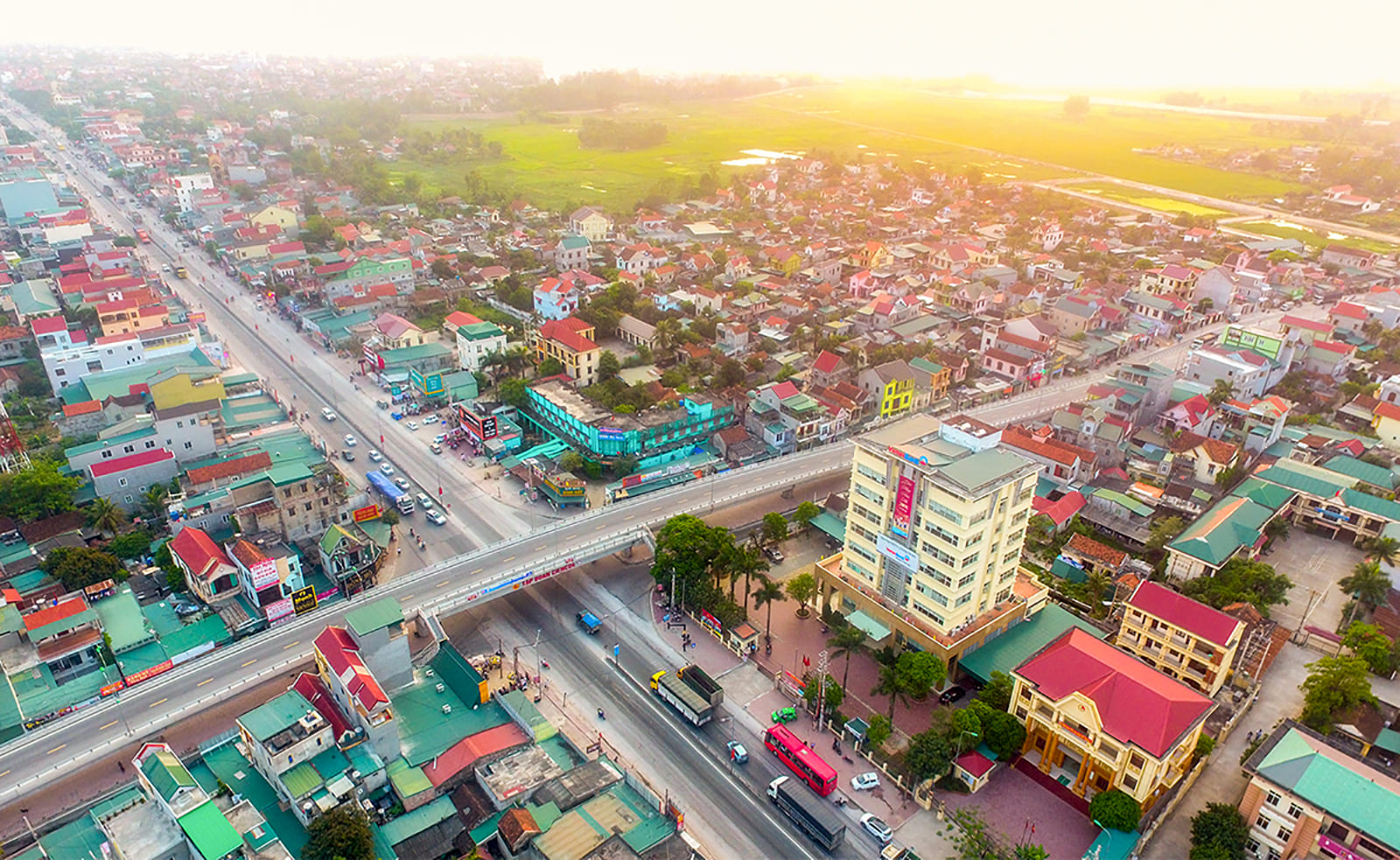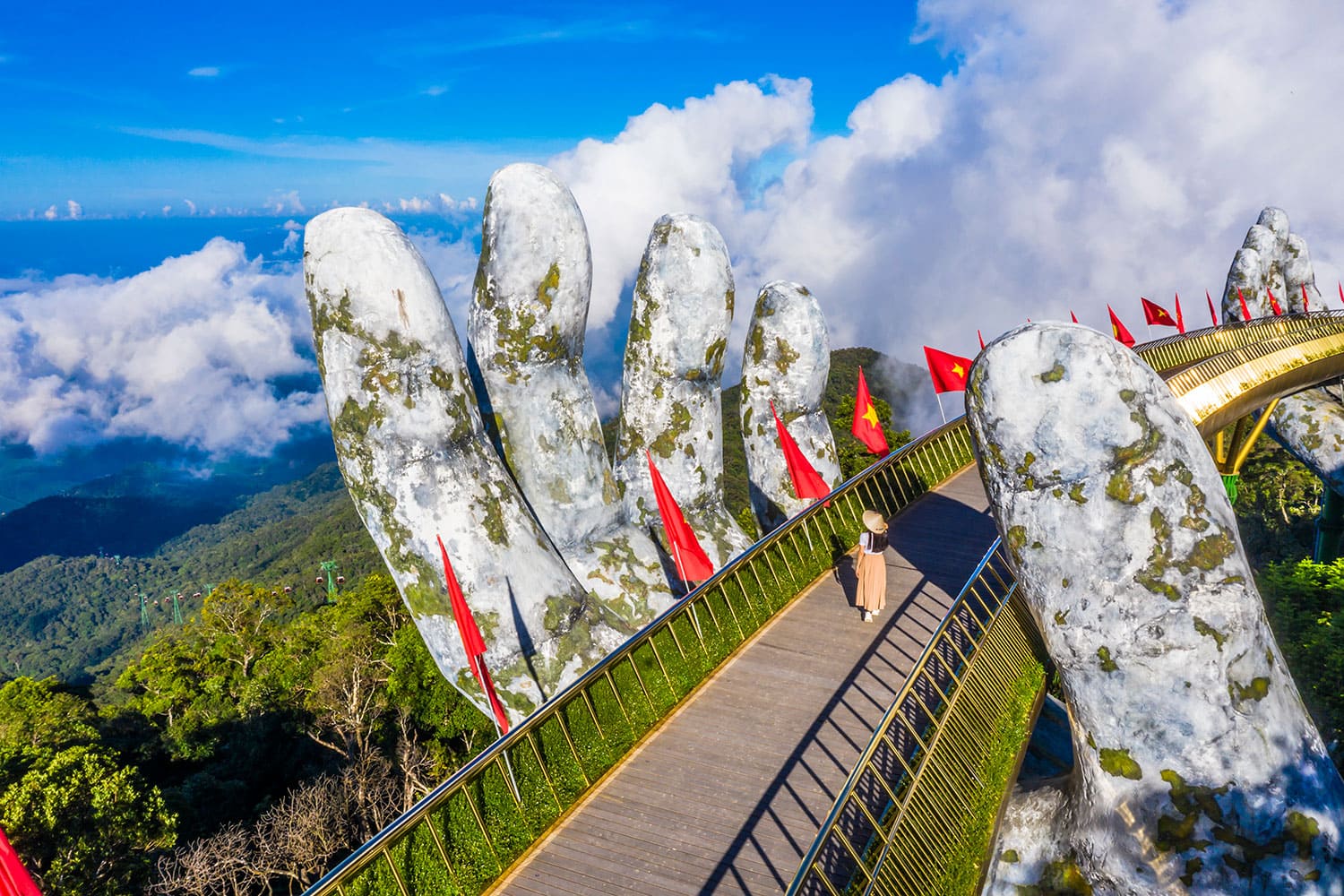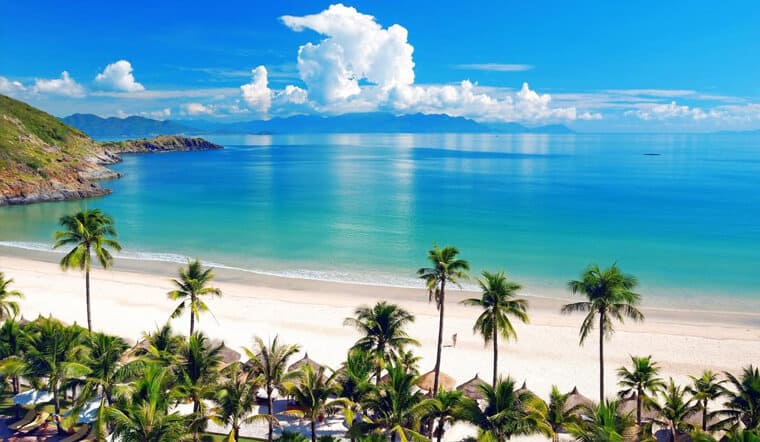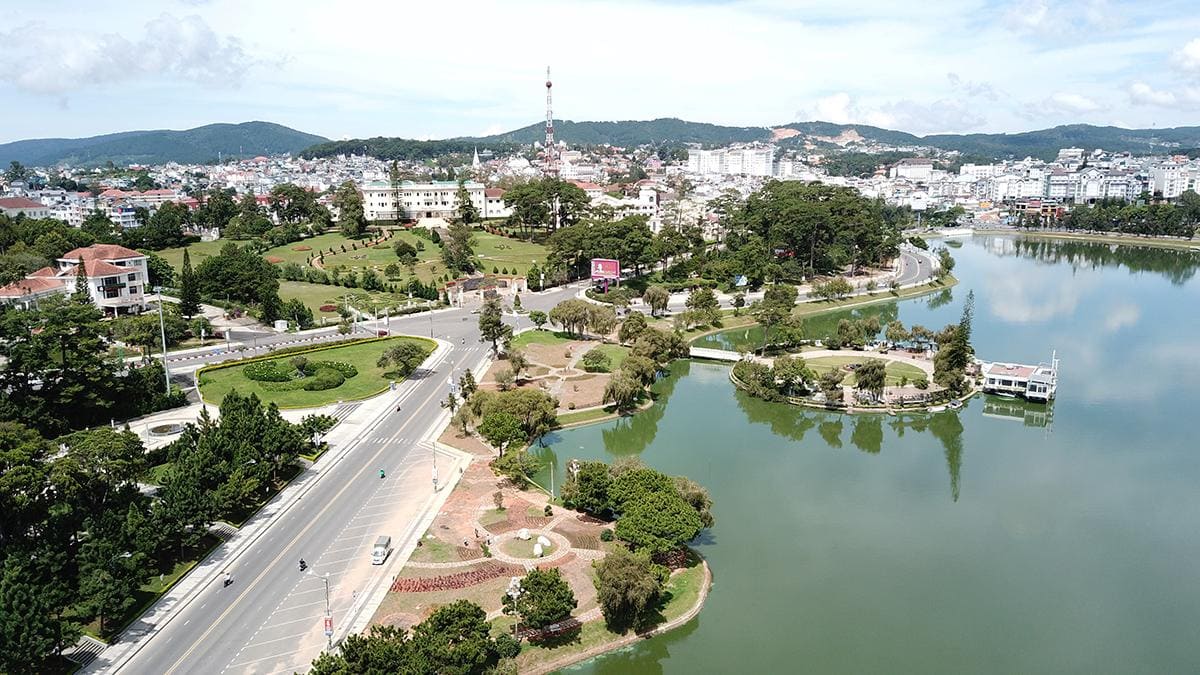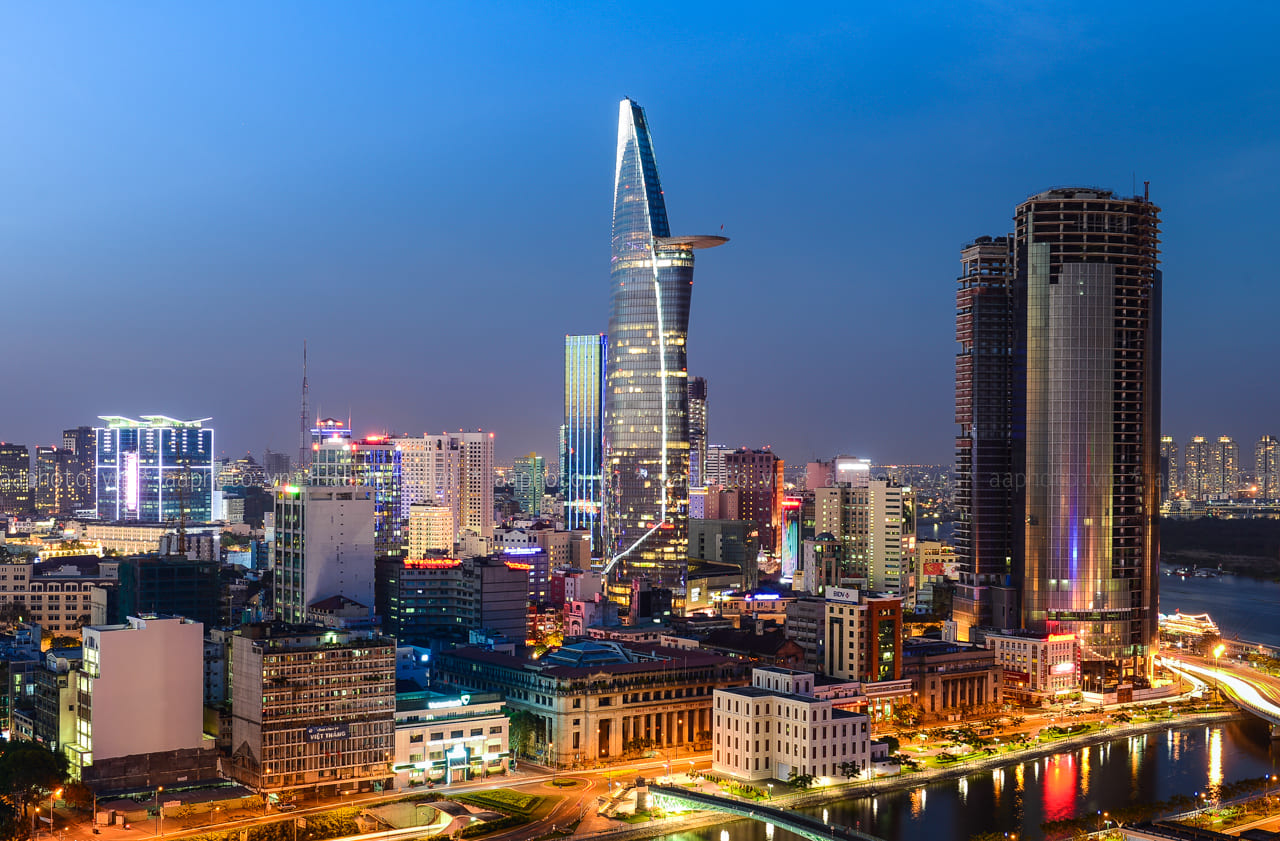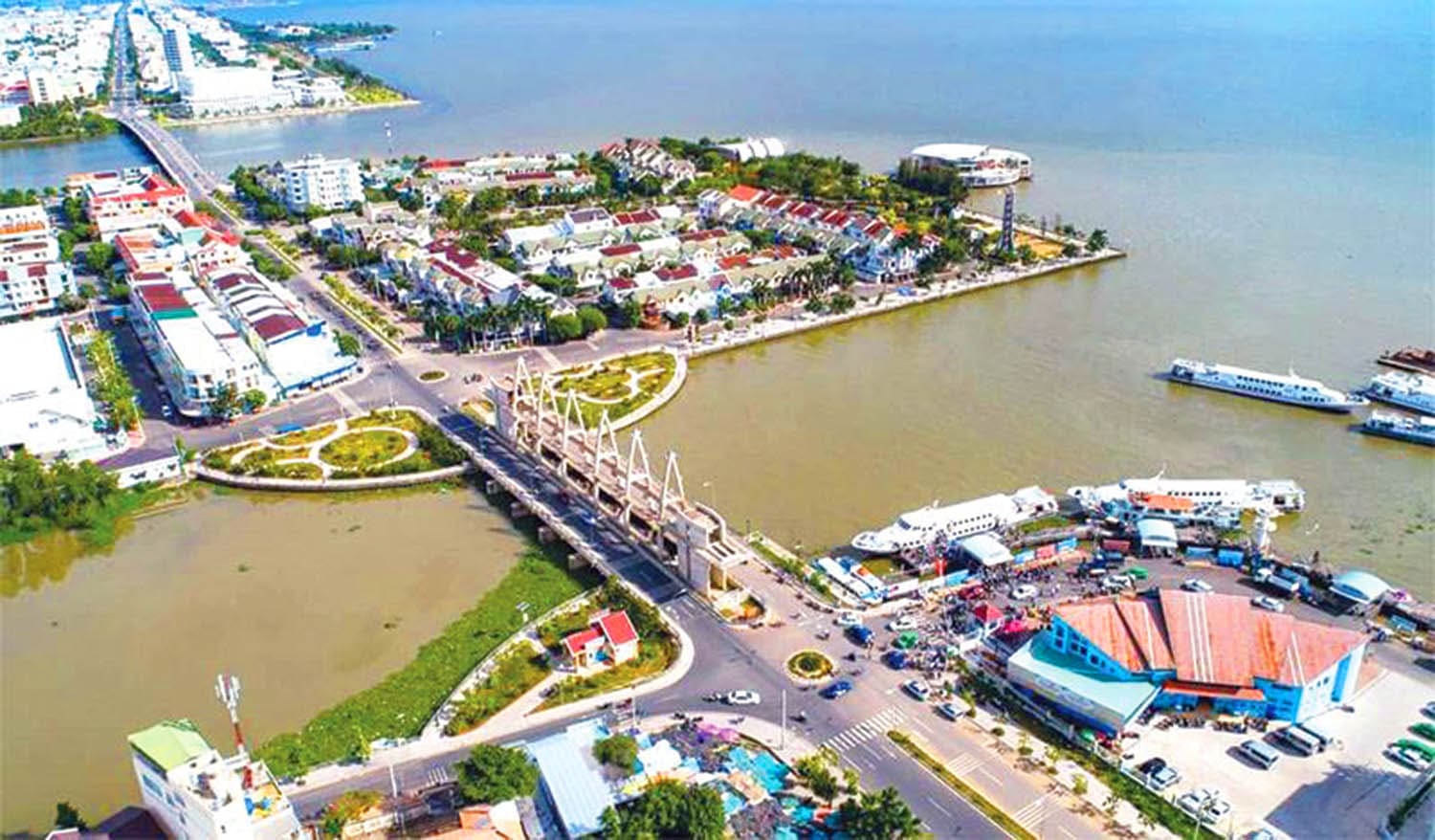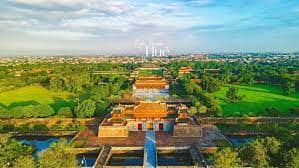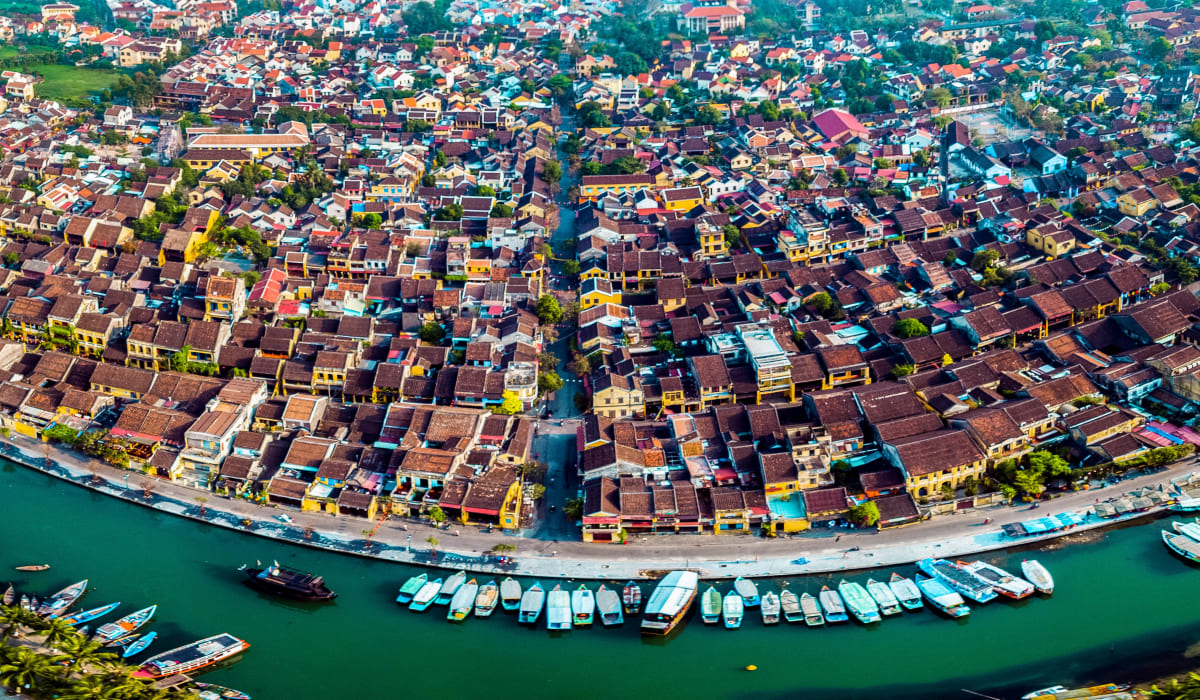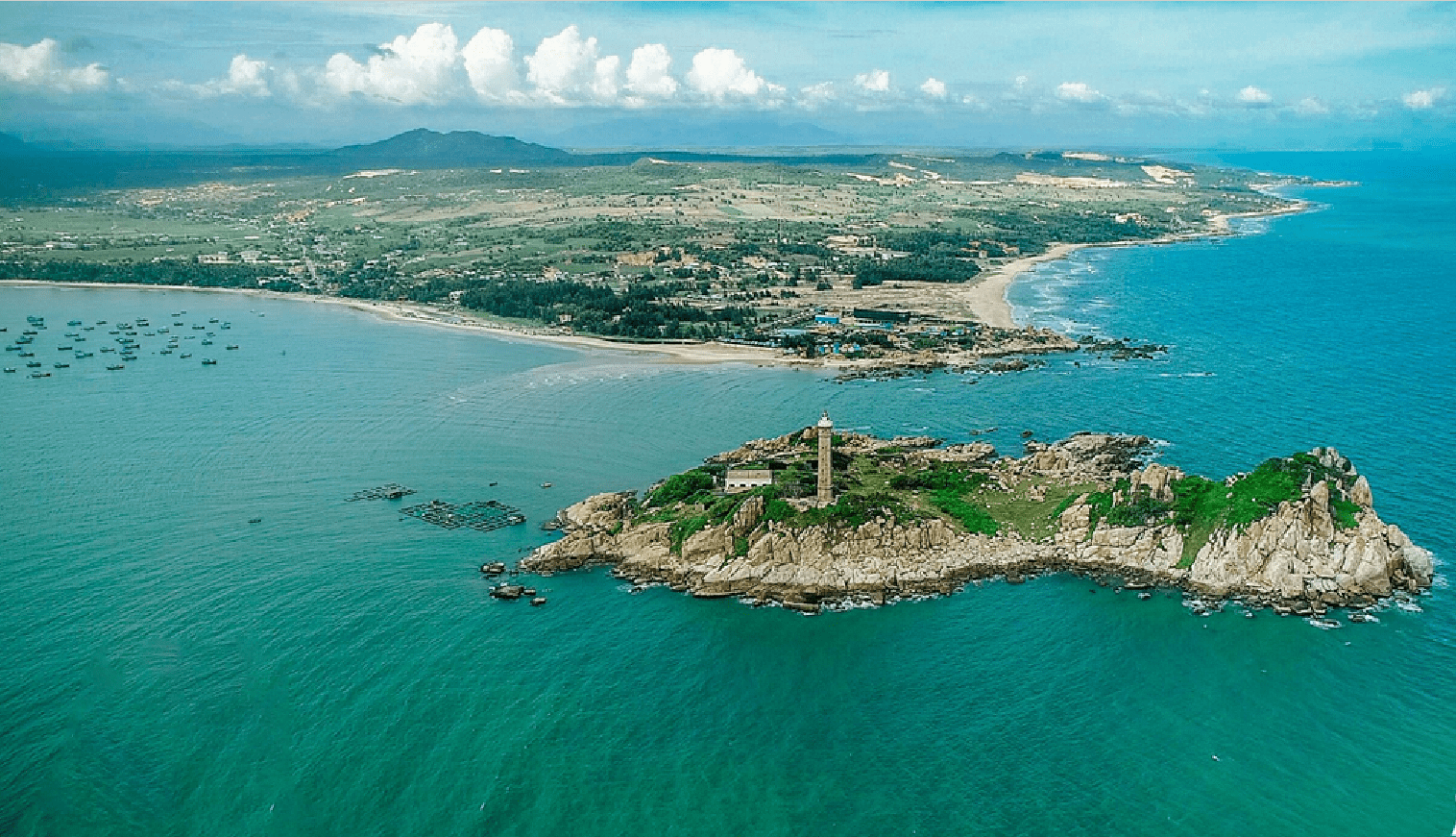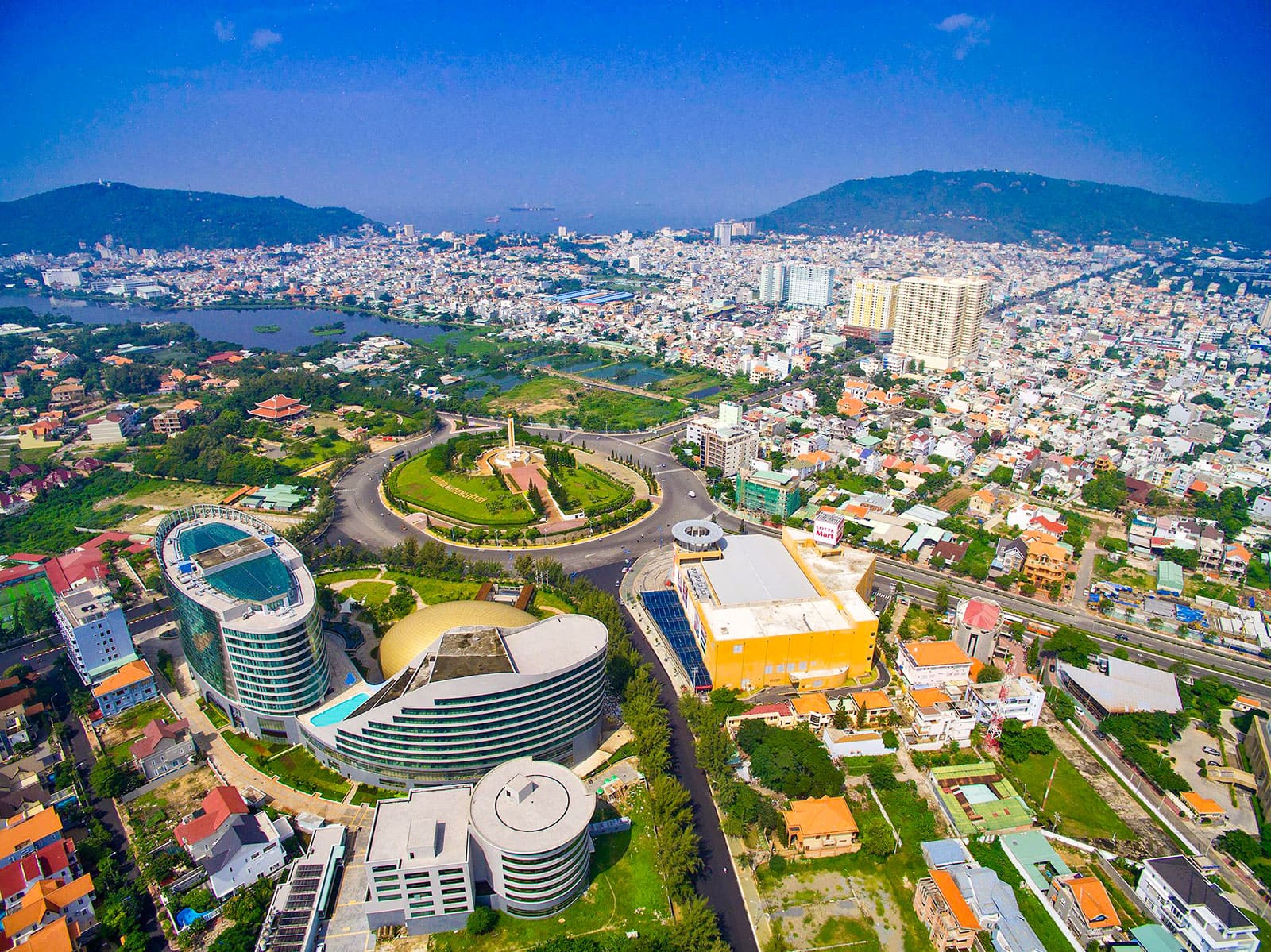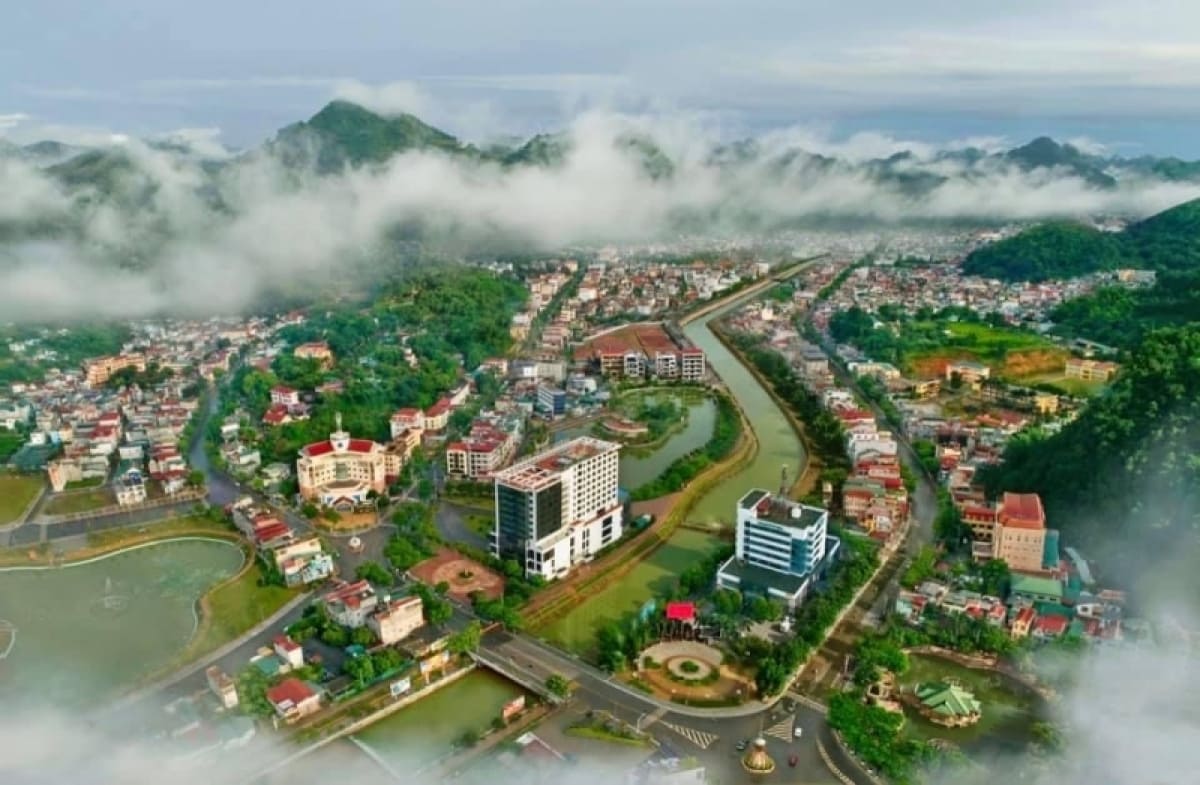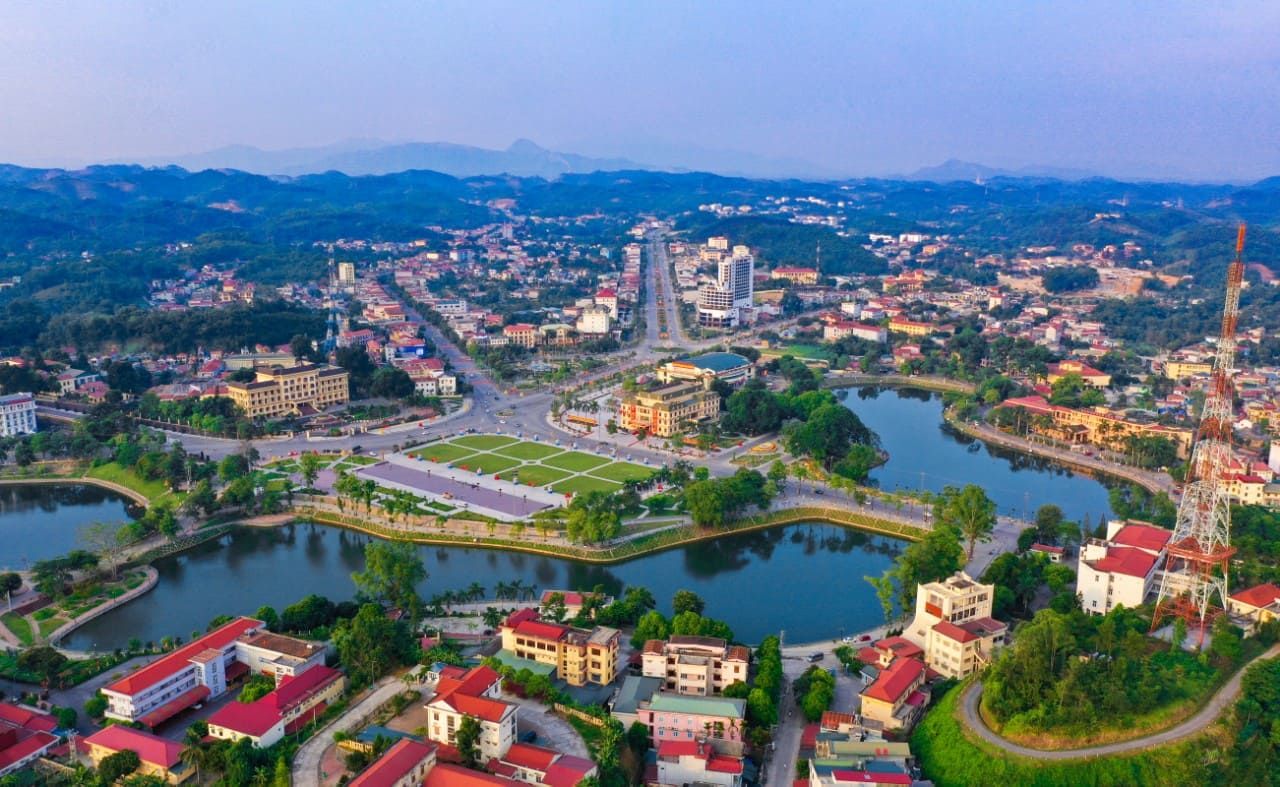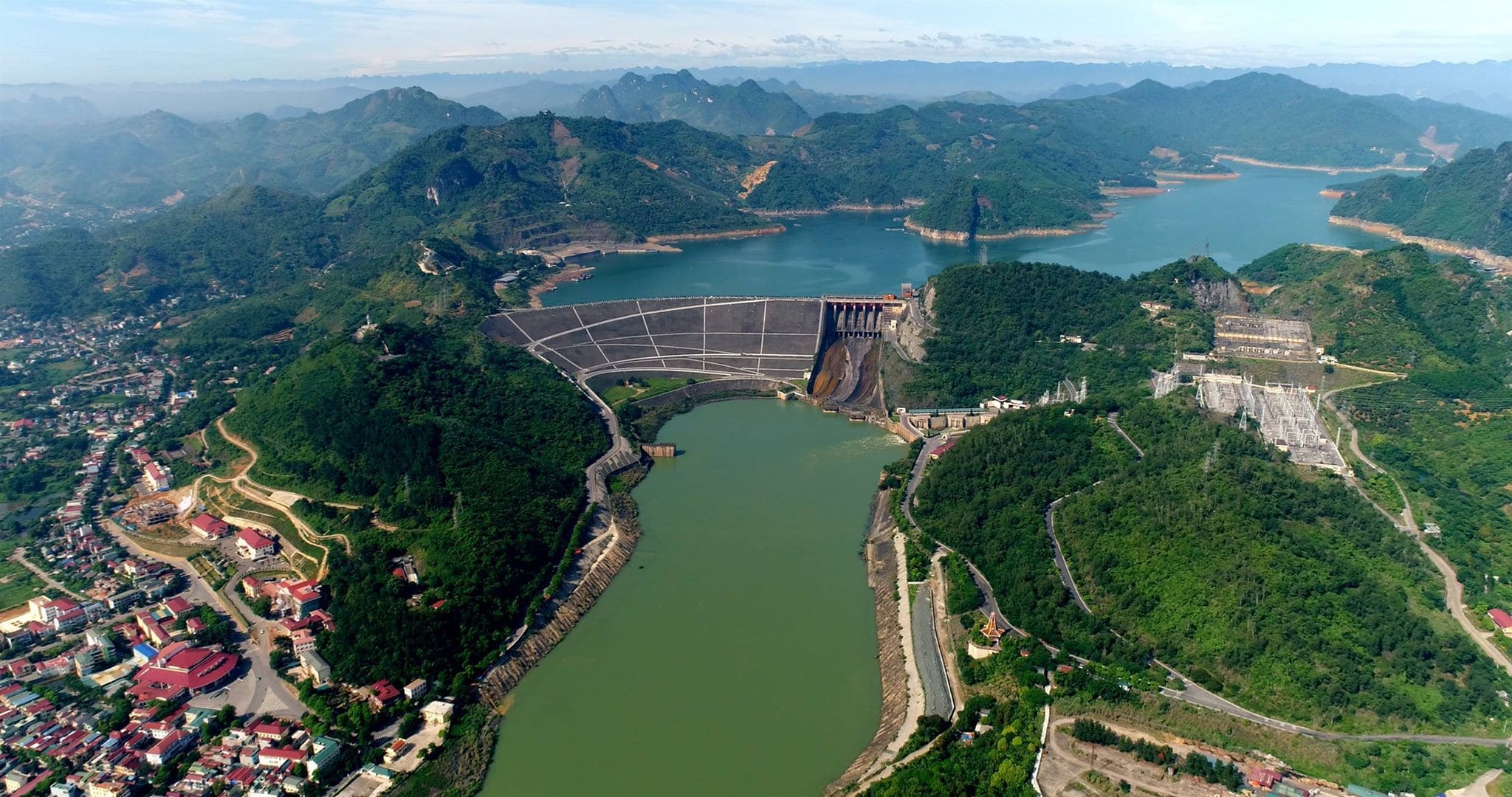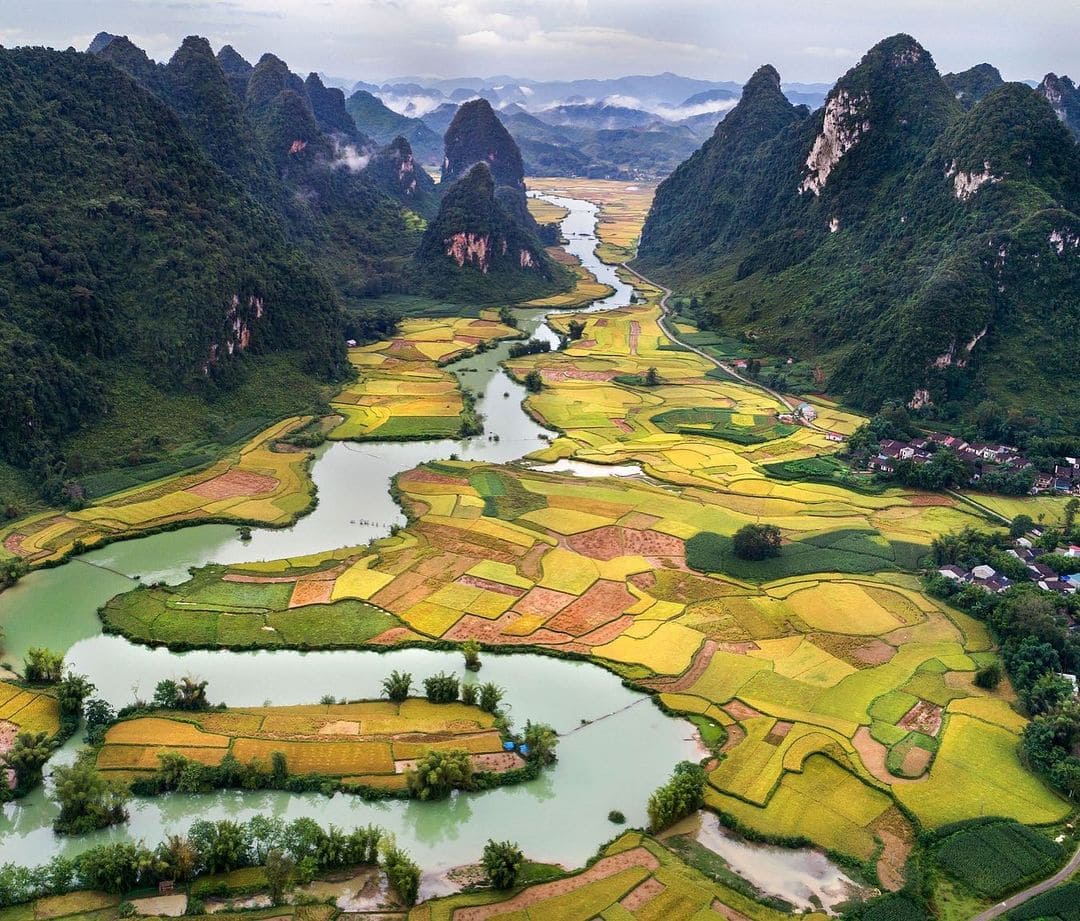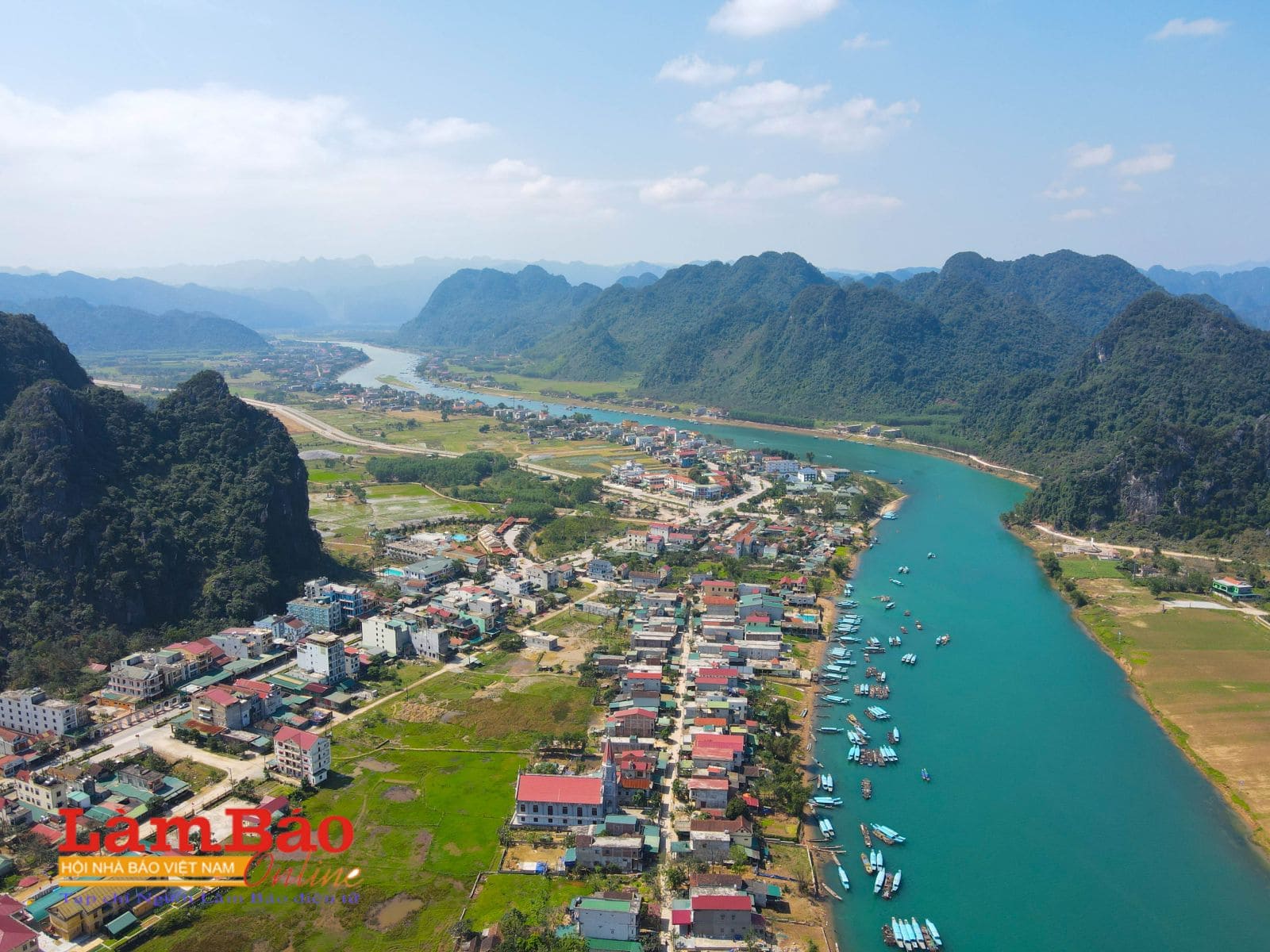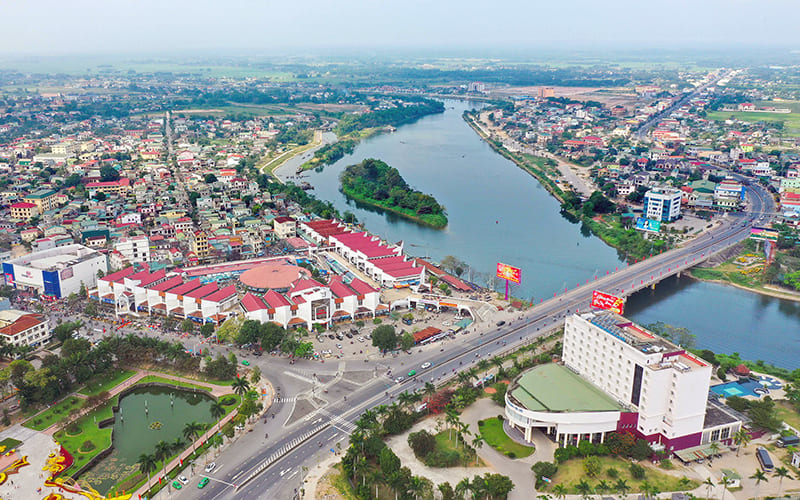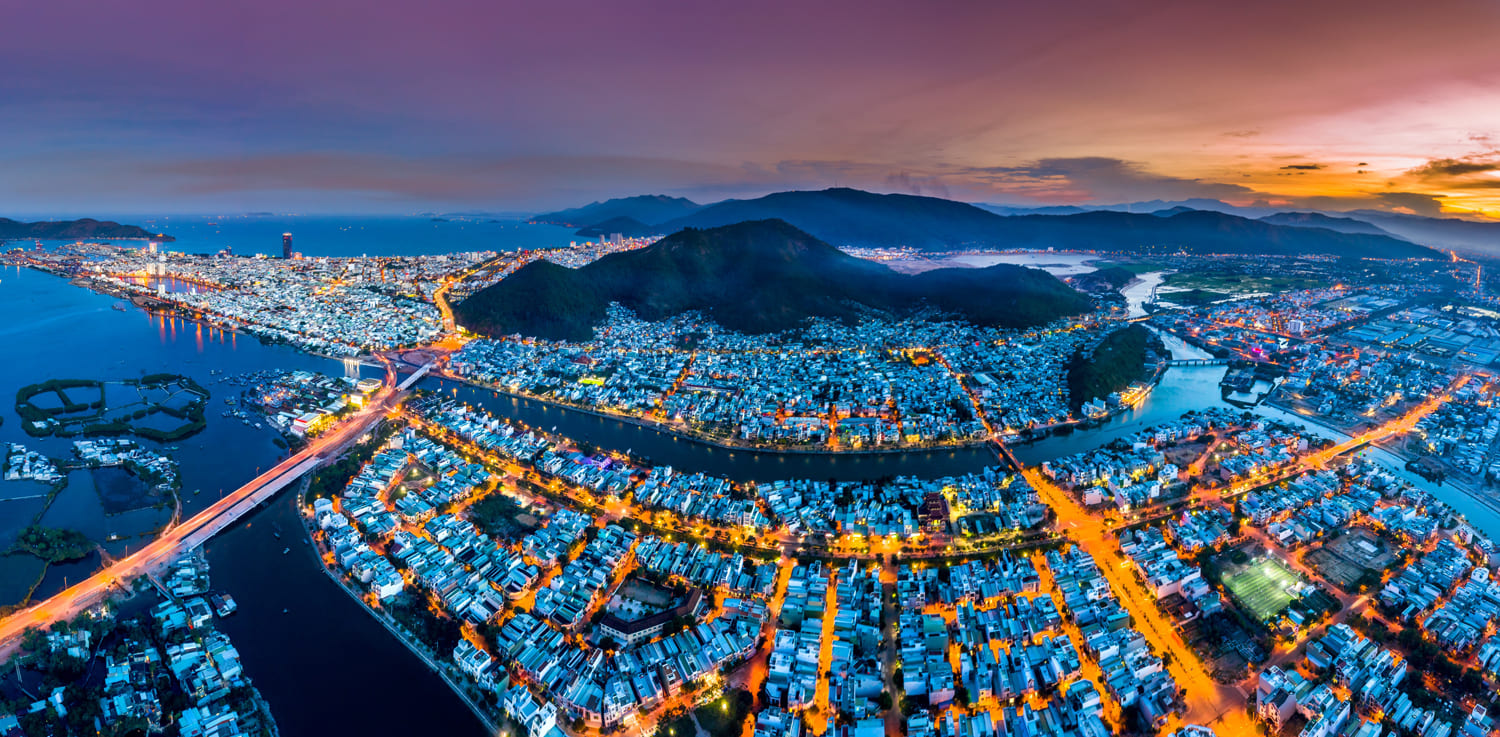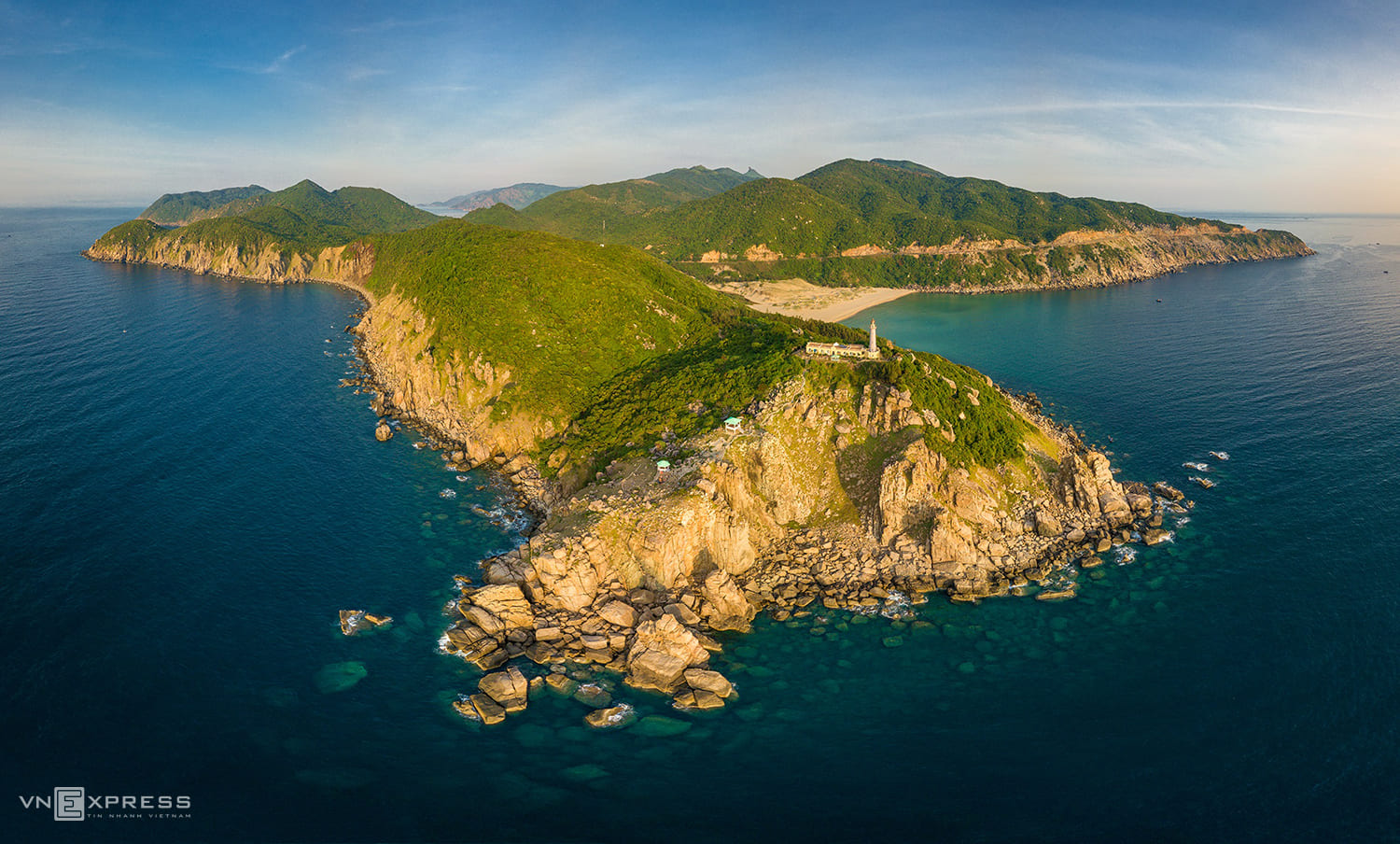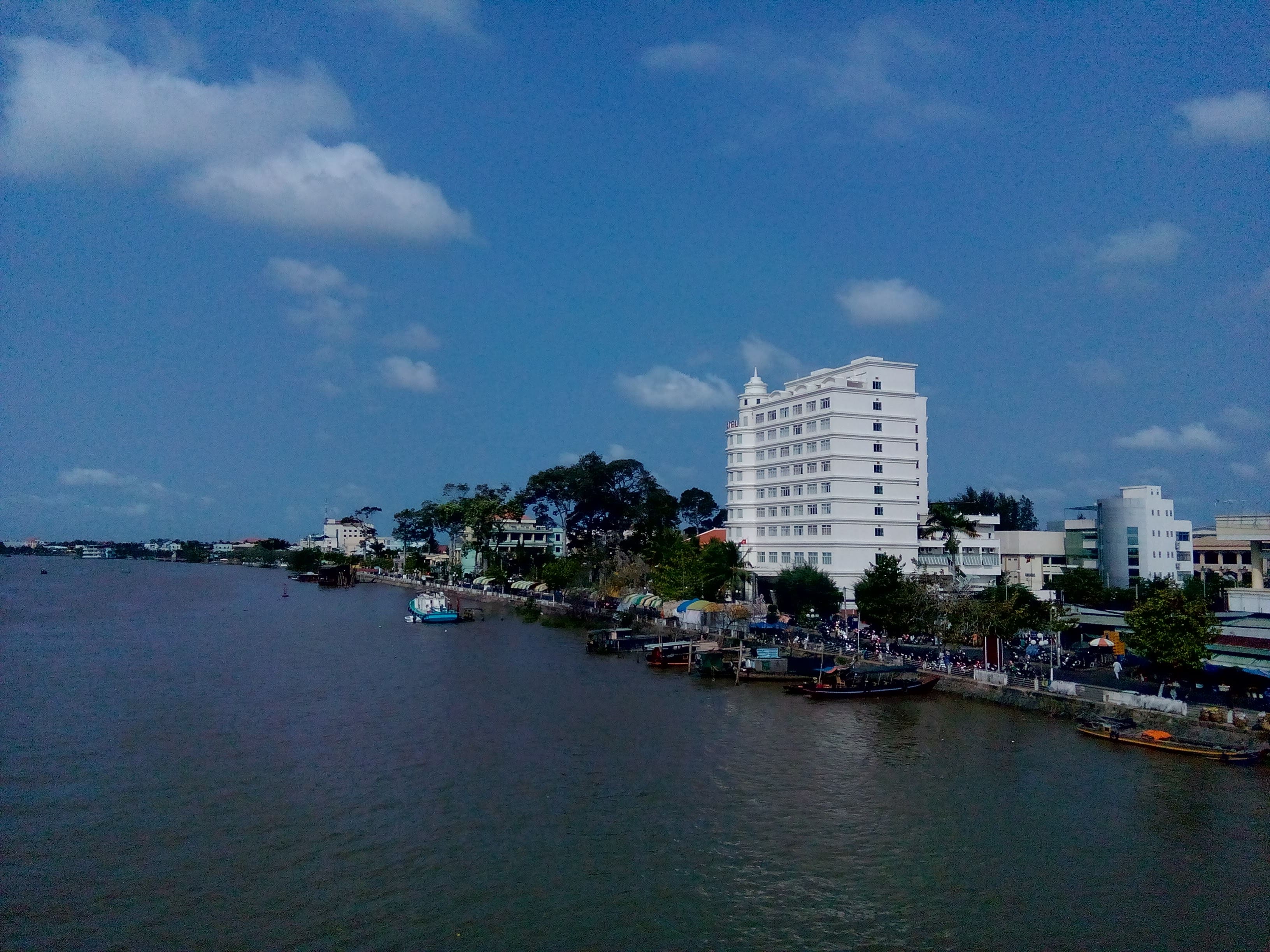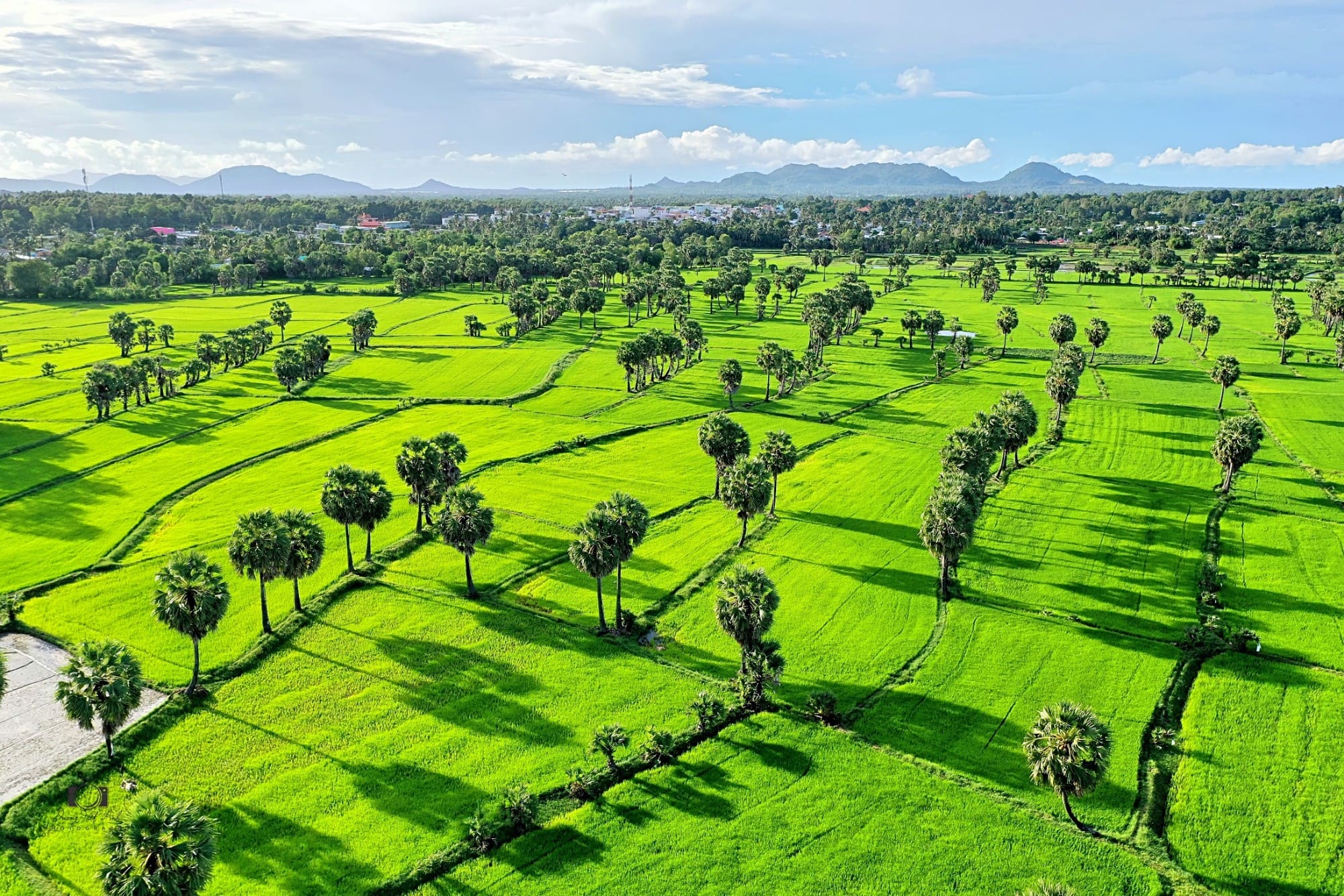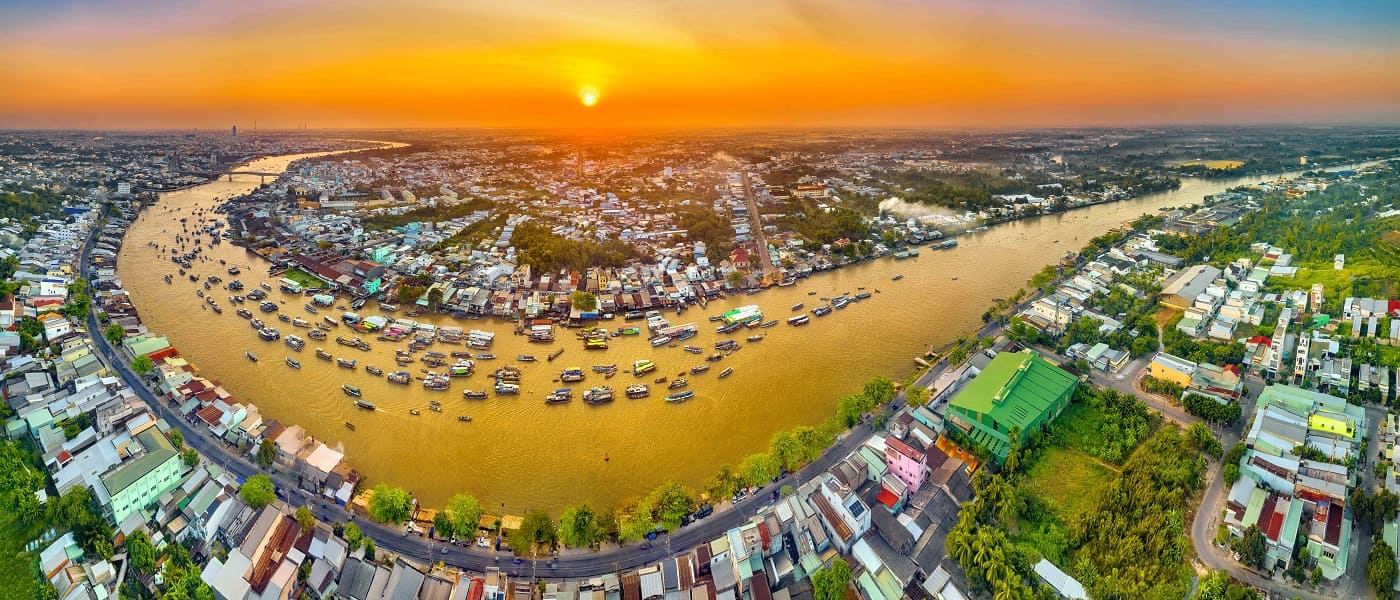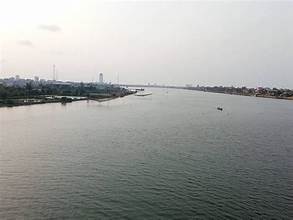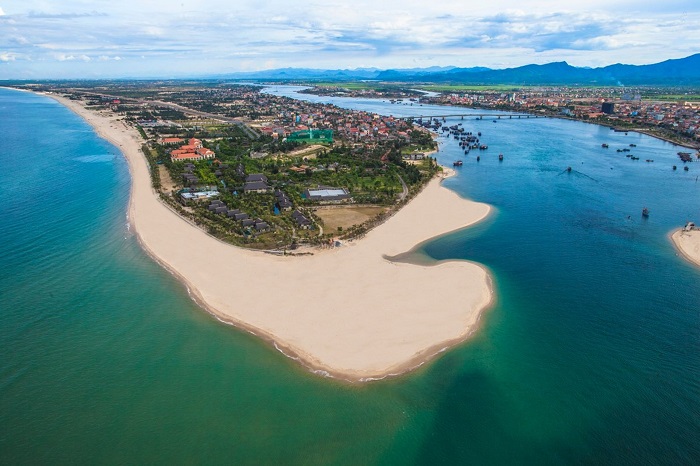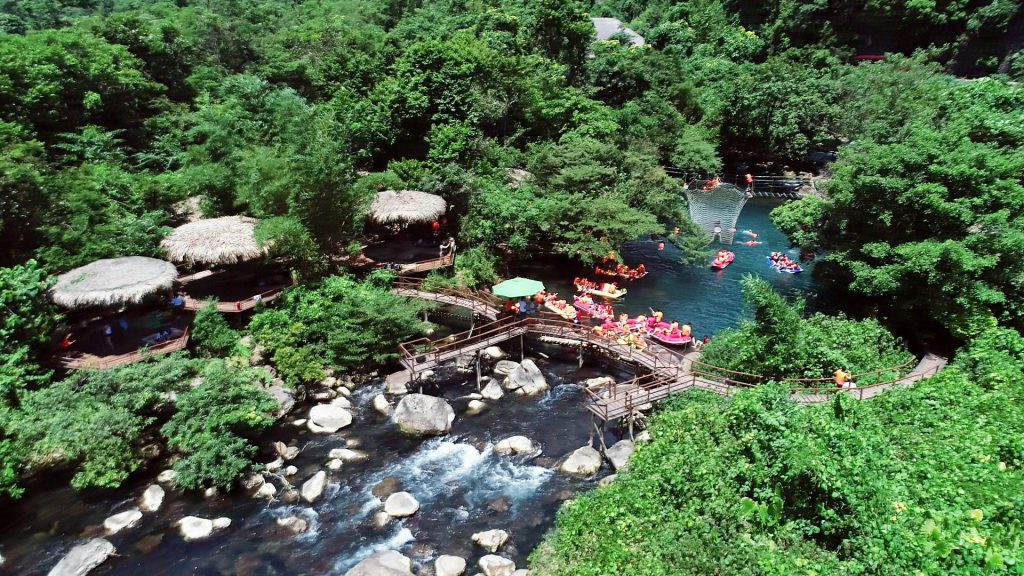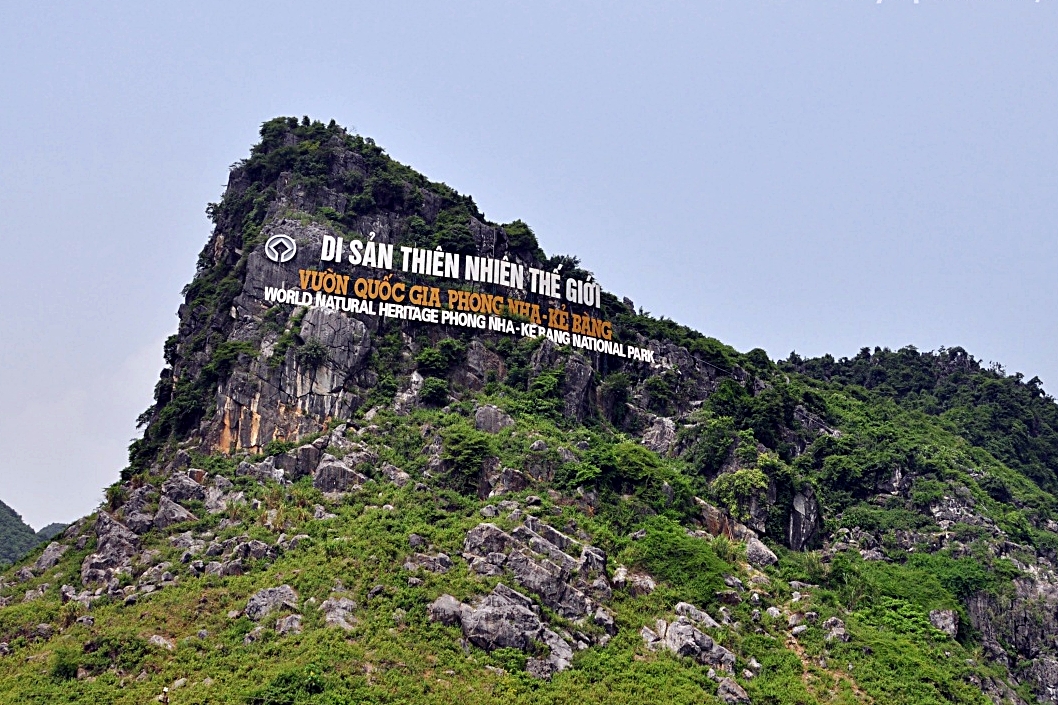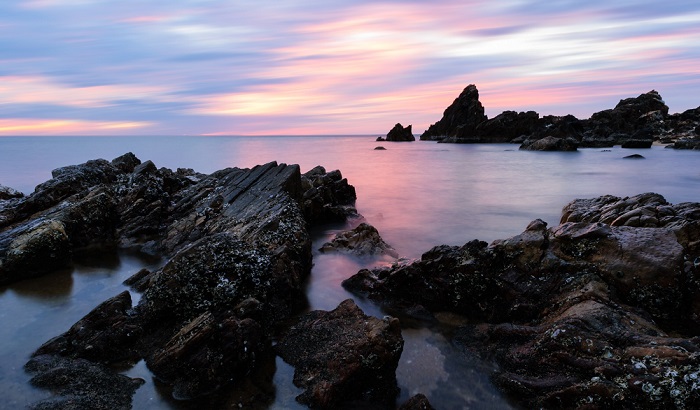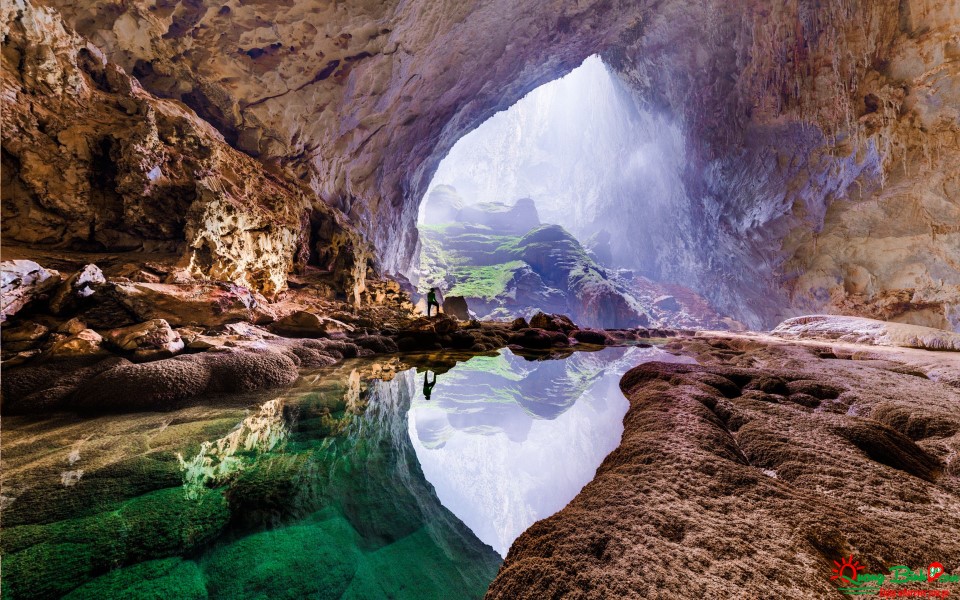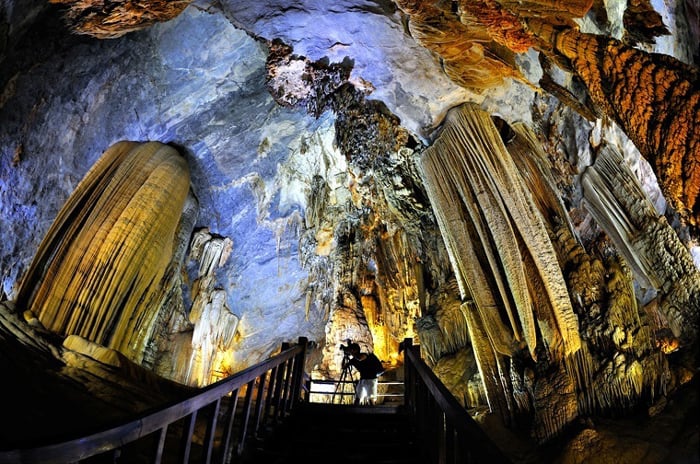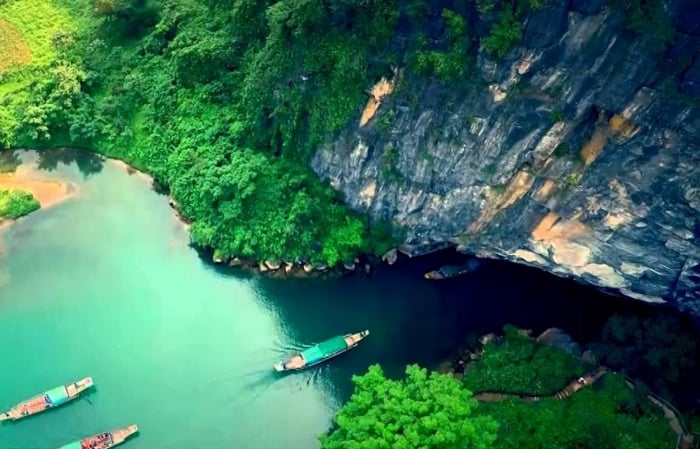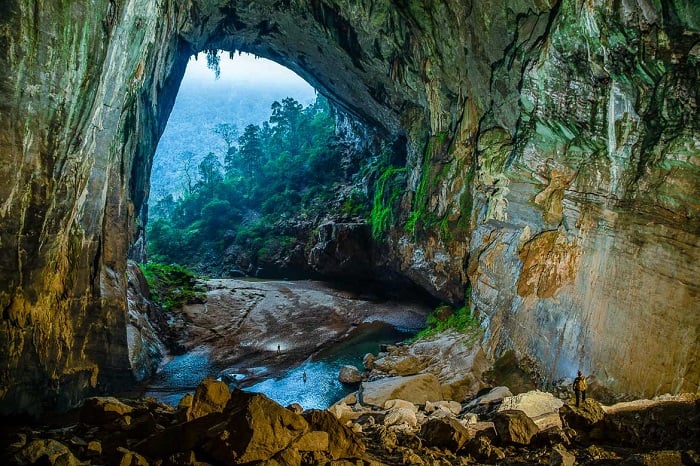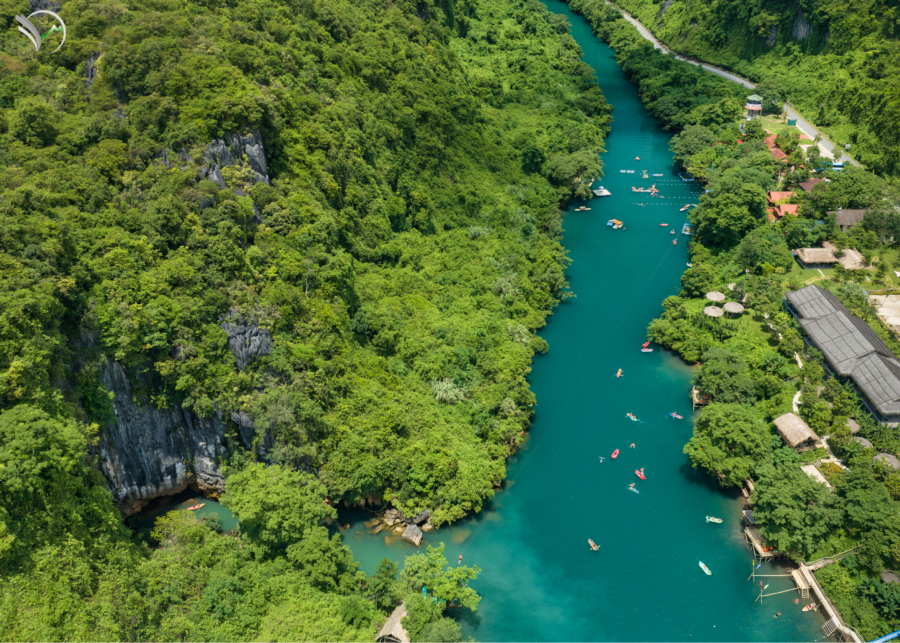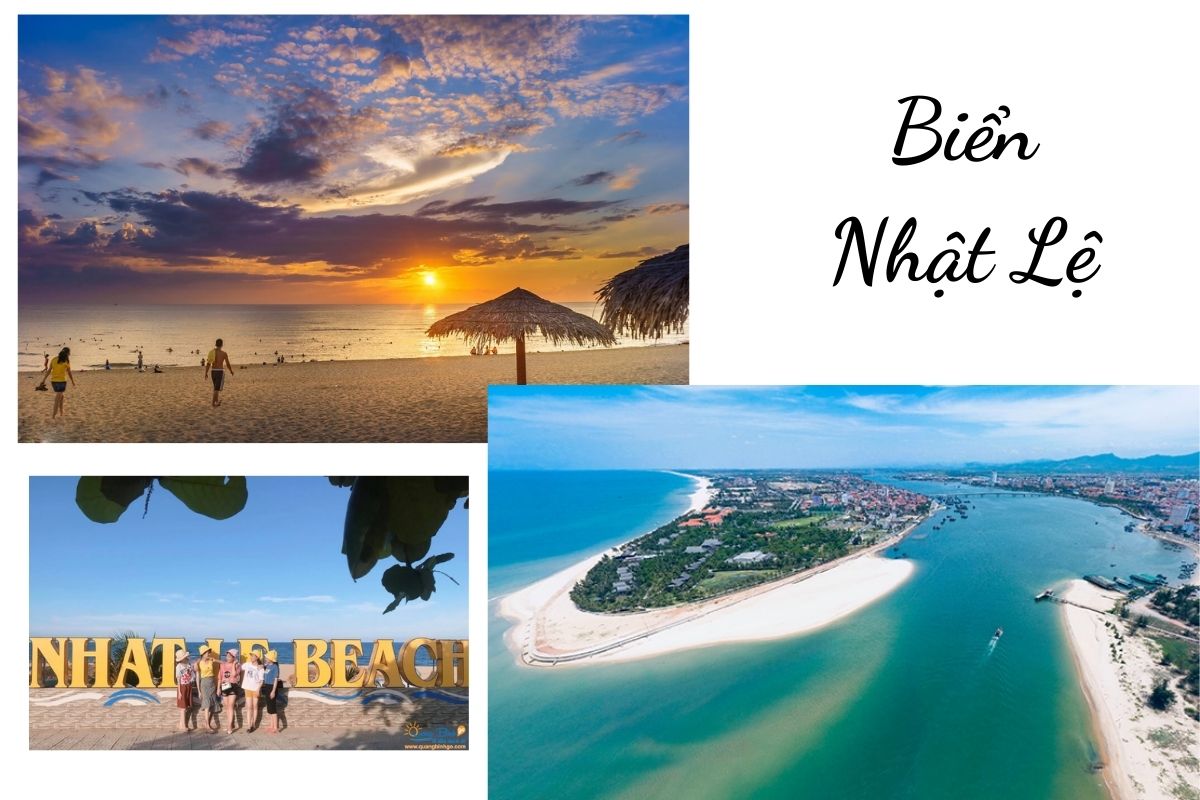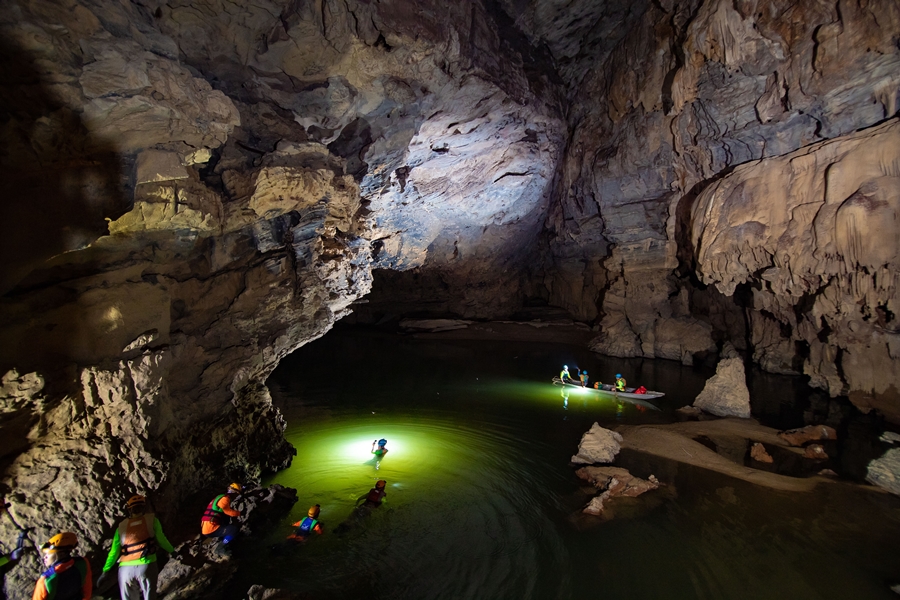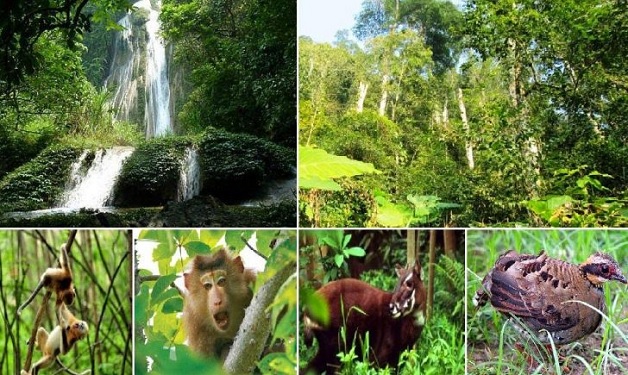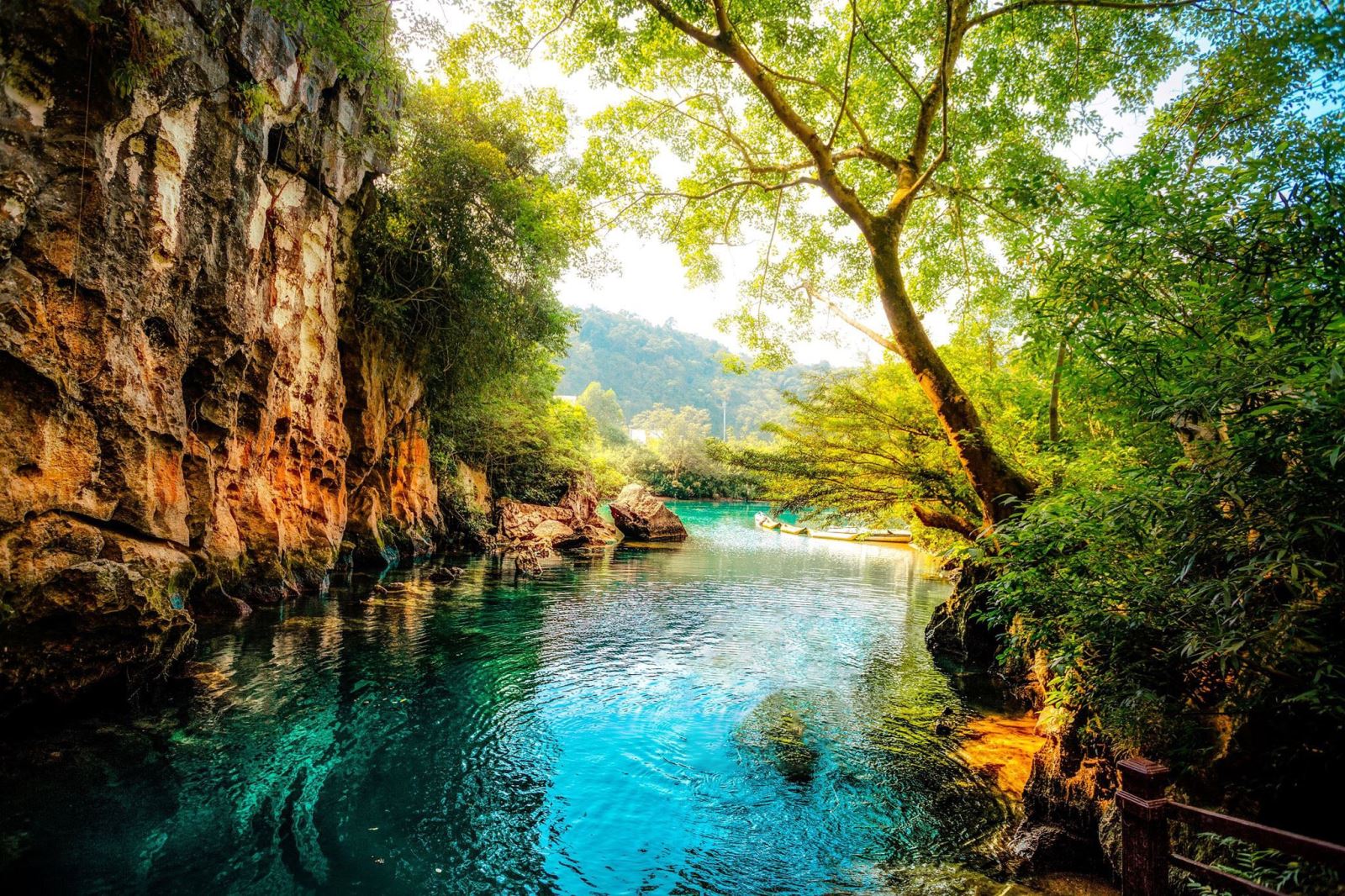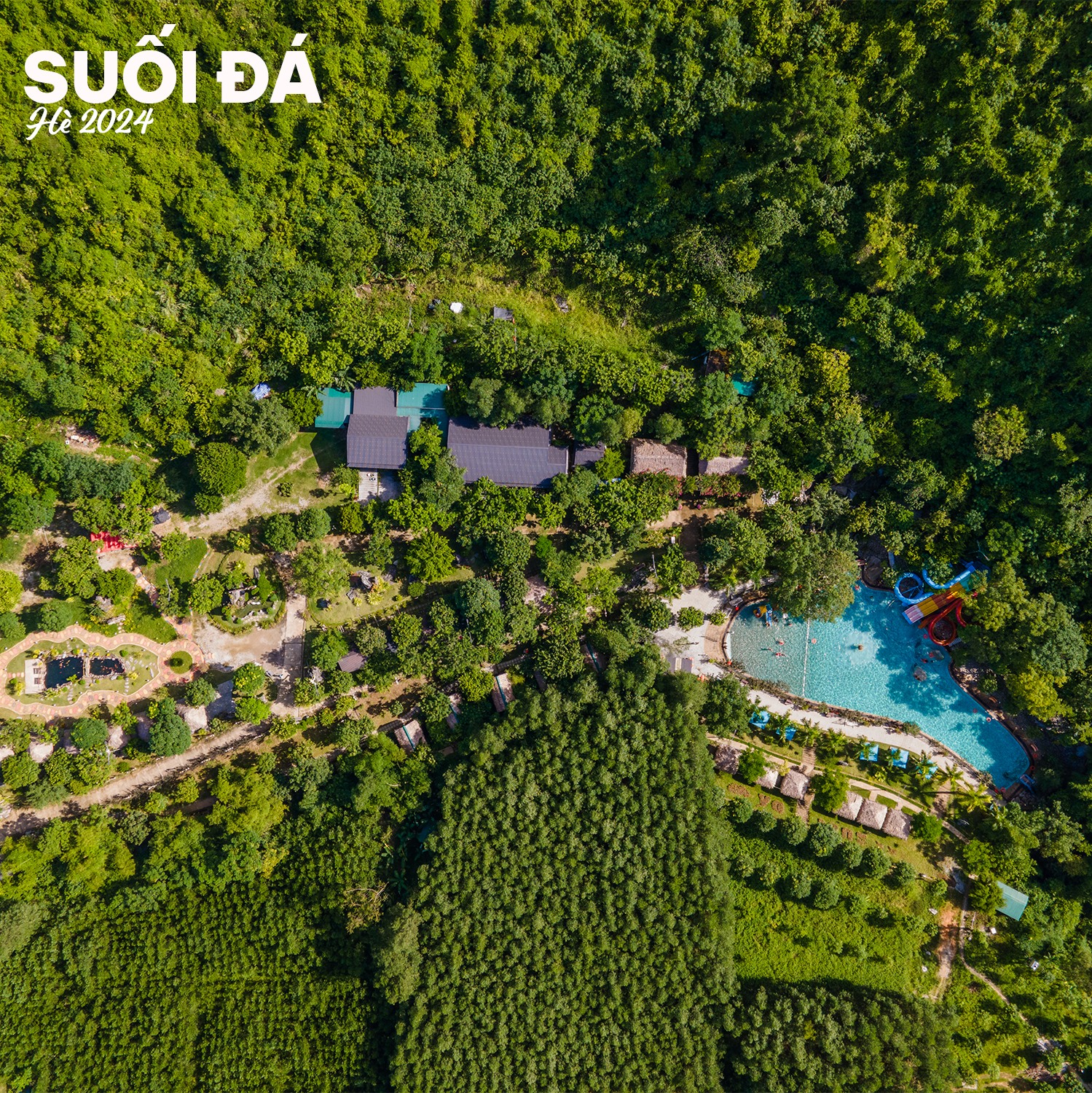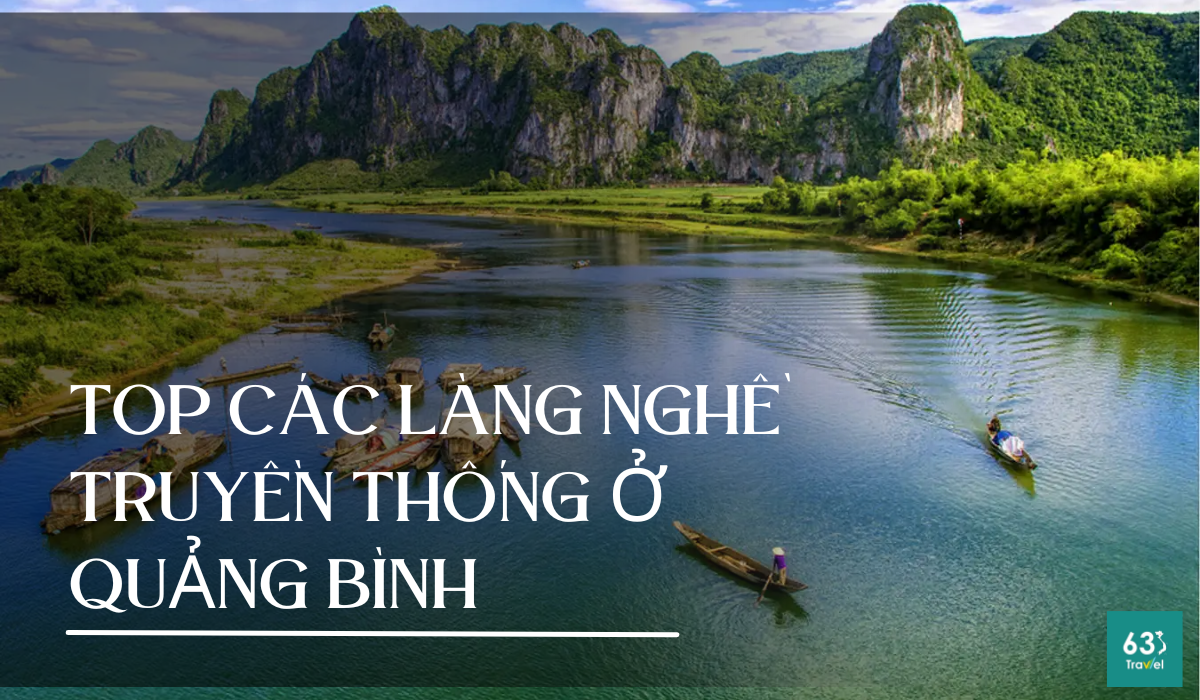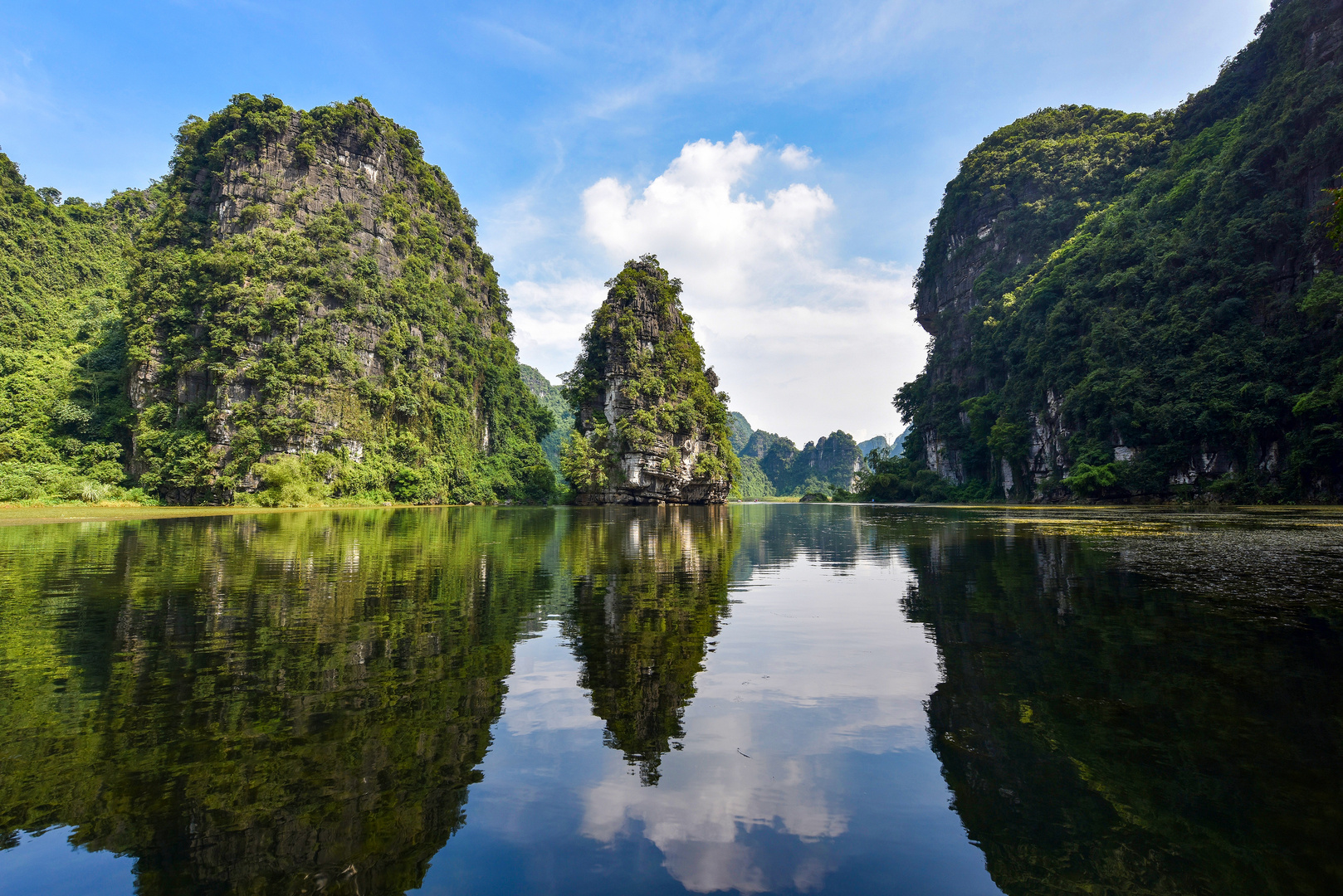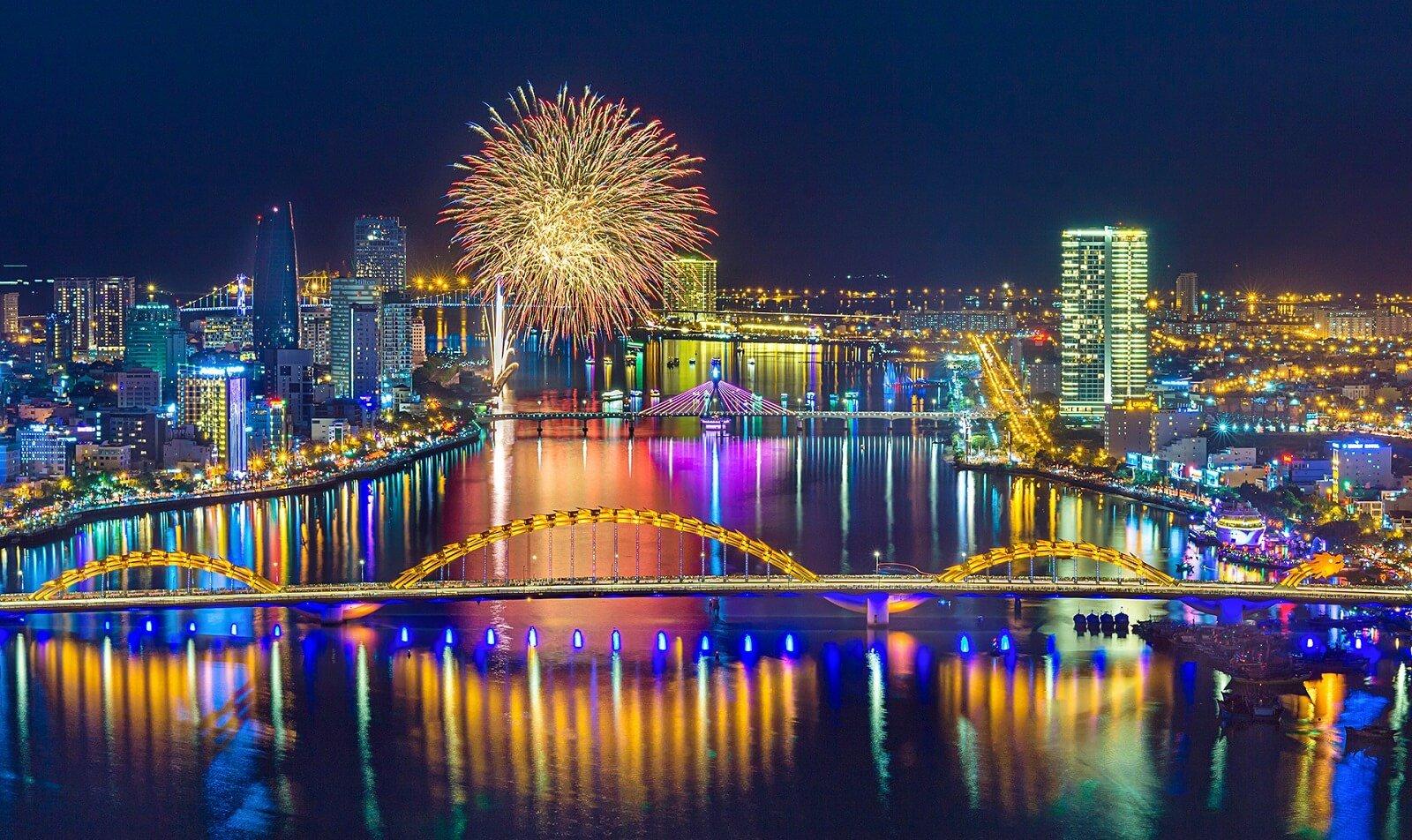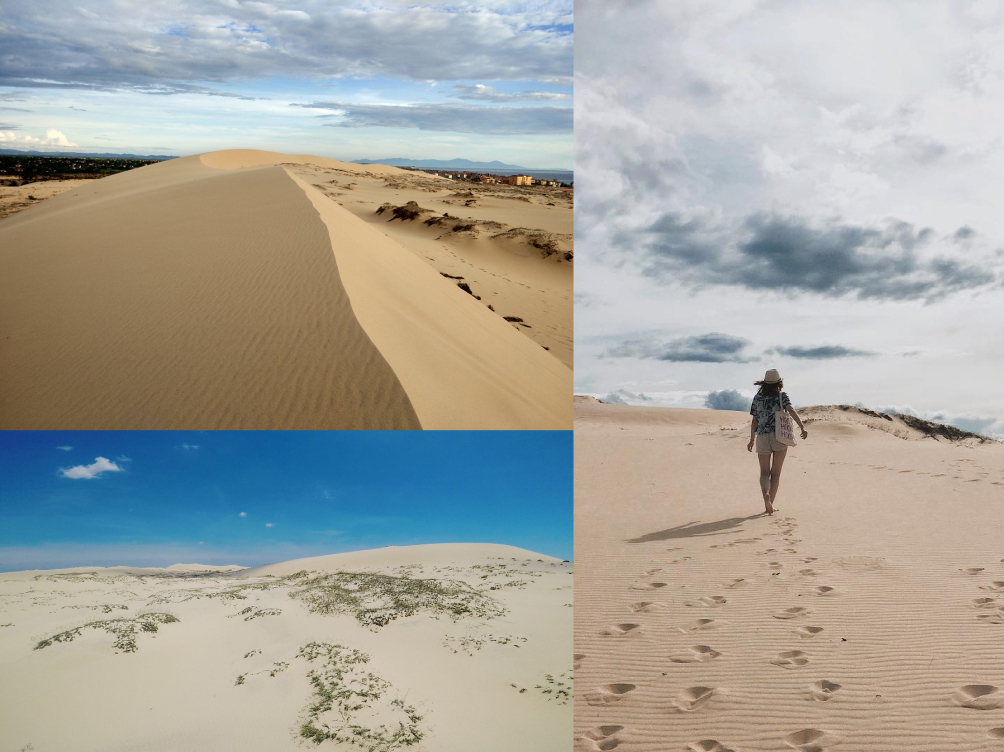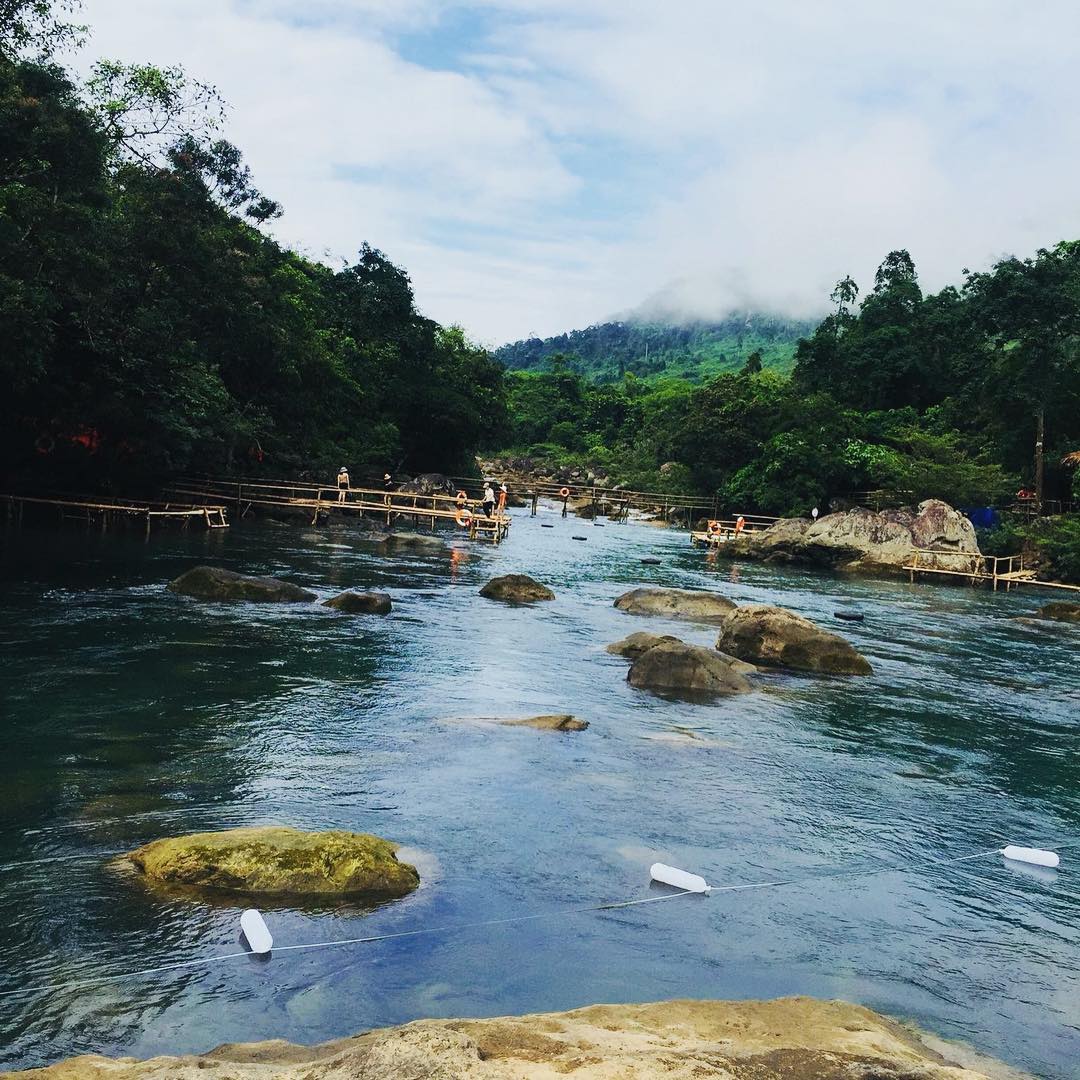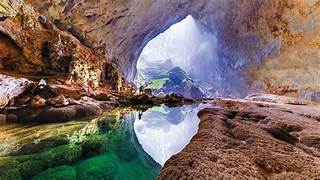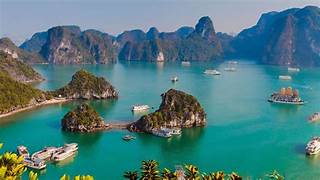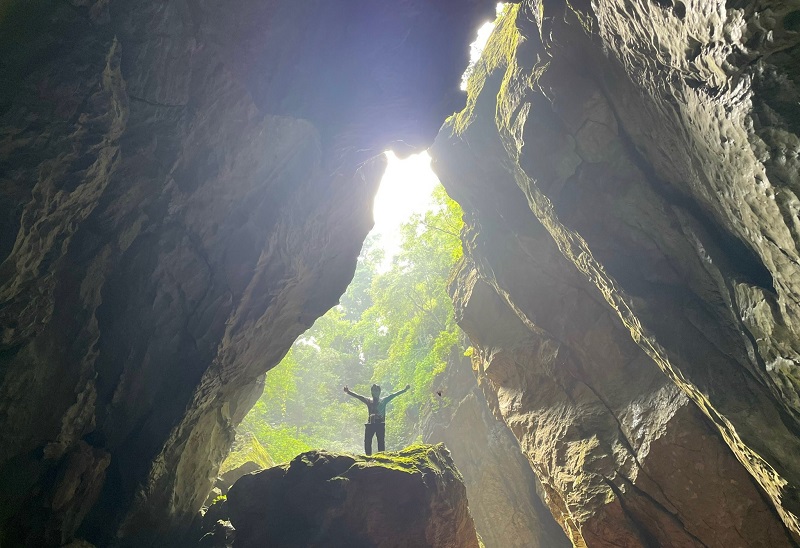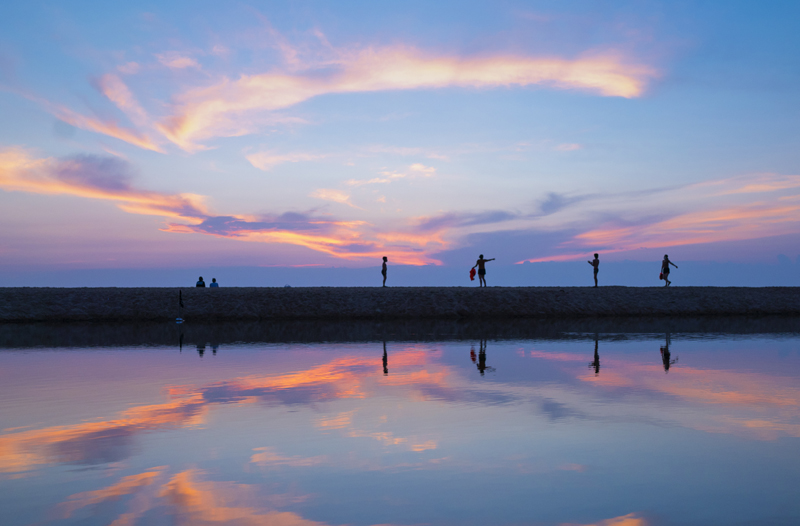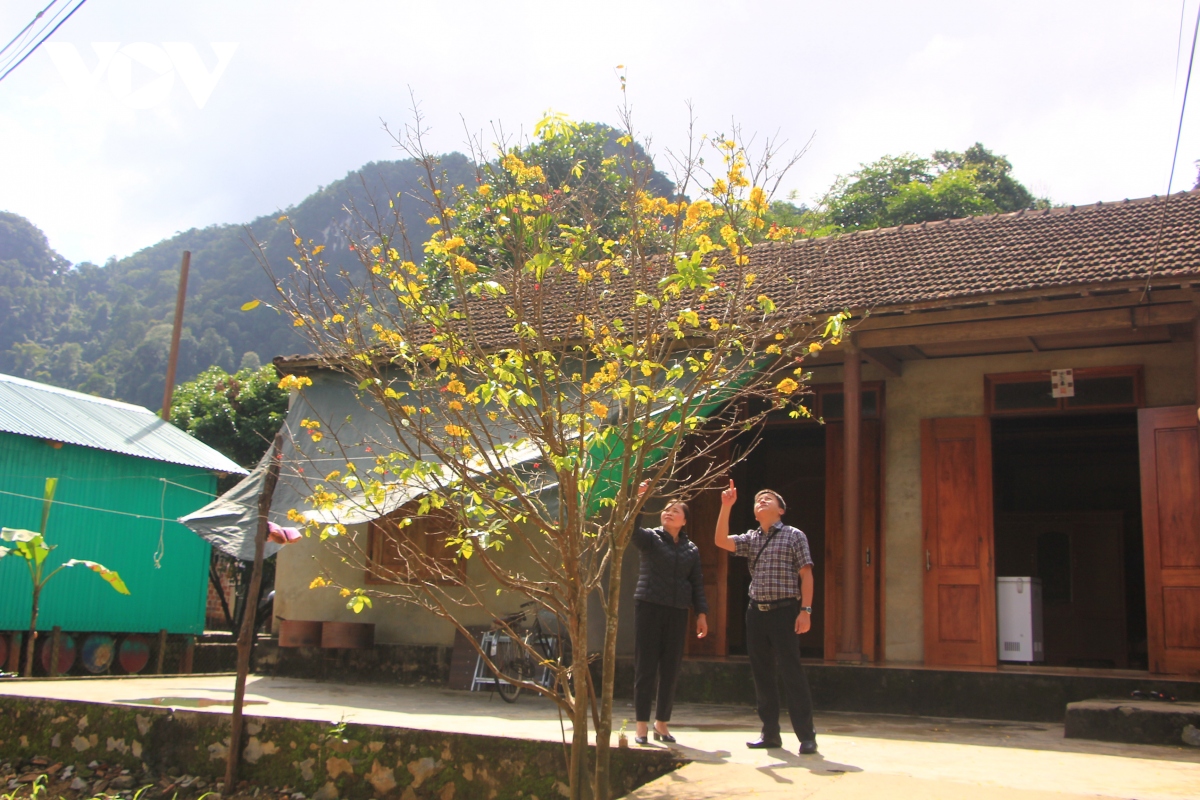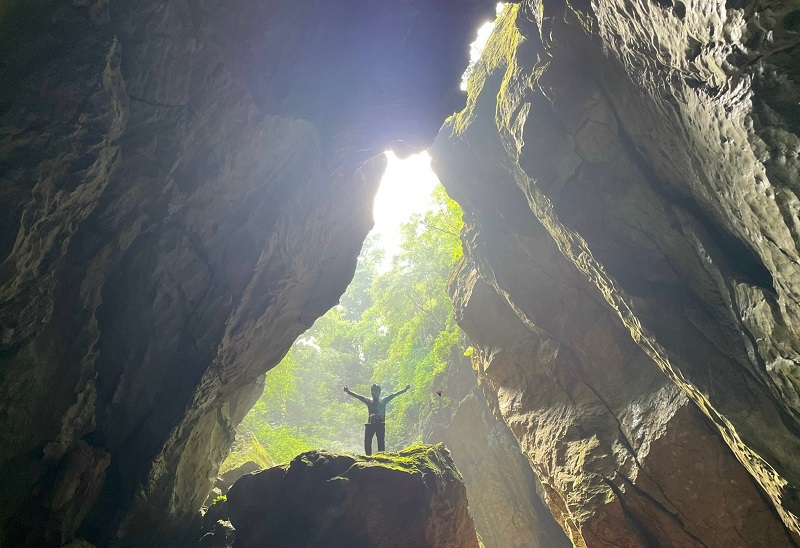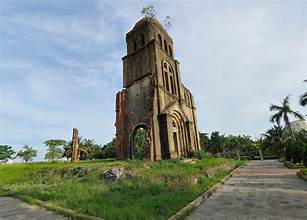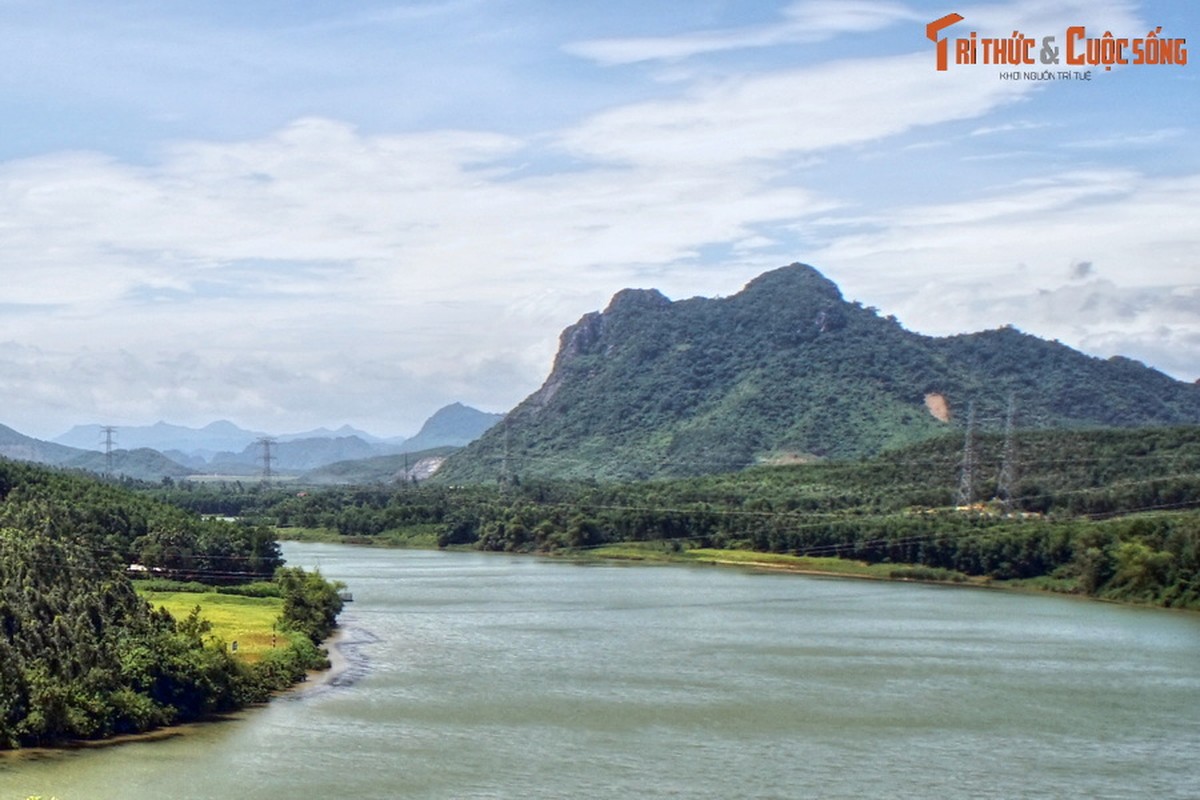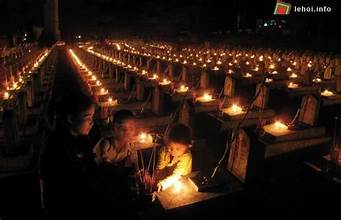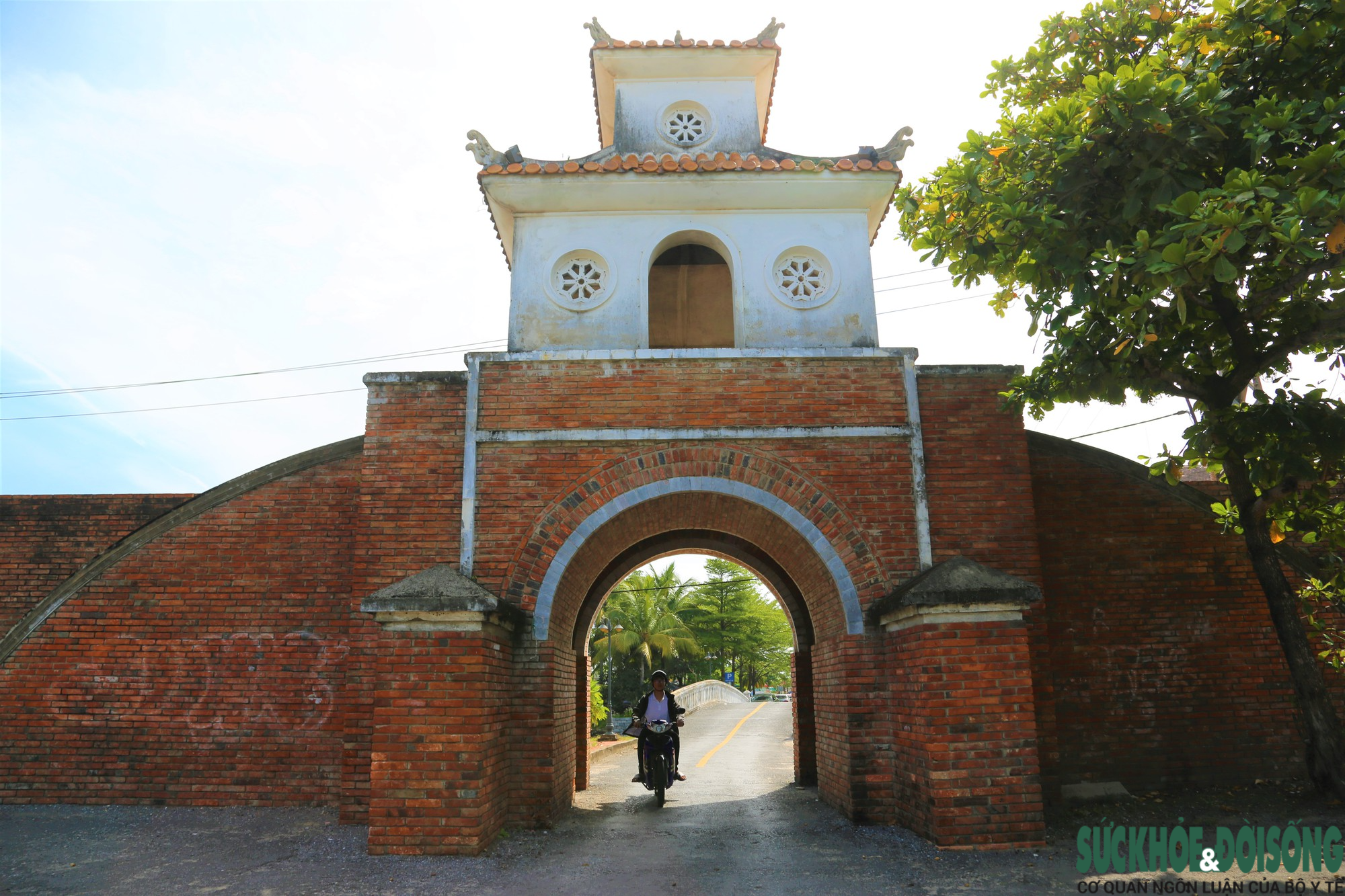Some people say Nhat Le River is most beautiful on a full moon night. On the calm river, Ms. Hang tilted her head in poetic golden light.
Some people say Nhat Le River is most beautiful on a full moon night. On the calm river, Ms. Hang tilted her head in poetic golden light.
Hoang Song Huong's music also resonates in the soul of Quang Binh's rivers and mountains with the lyrics: "Floating and lulling the waves/ Floating love song/ Legendary Nhat Le moon/ Waves pounding my heart". But unexpectedly, this time when I came to Dong Hoi, I was stunned by the Nhat Le river before dawn. Those are the waves that burn endlessly, fragrant with herbs as if the scent of flowers floats up.
City of roses by the river
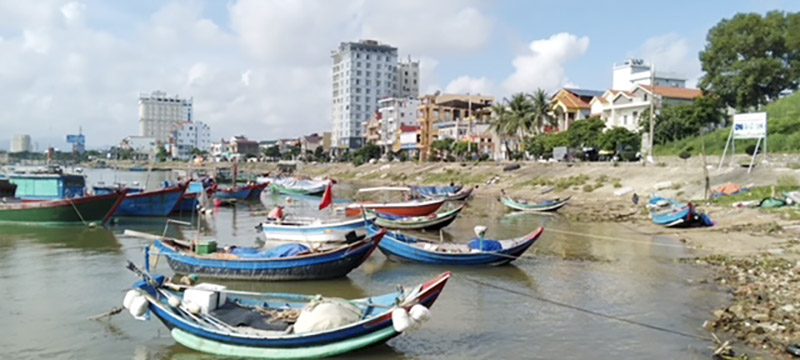
A corner of Dong Hoi city.
Dong Hoi city is youthful and fresh on the Nhat Le river. This is a young city that suddenly made a breakthrough in the 90s of the twentieth century after Quang Binh province was re-established. There was a time when Dong Hoi town was forgotten since the late 70s of the twentieth century. Quang Binh is thin on the open sea, located between the two front lines of the country. The width from East to West is only about 50 kilometers. So the streets of Dong Hoi are also lonely next to the fishing villages along the Nhat Le estuary. The river sometimes becomes ferocious because of the loneliness before the sea. The windy, white sand region of Quang Binh also seems to concentrate the heat in Dong Hoi. To Huu's immortal poem still remains until now: "Changing sand dunes in the noon sun of Quang Binh" (Mother Suot).
Dong Hoi is associated with Quang Binh Quan, which has existed since 1631 with many historical achievements from the Trinh - Nguyen war period until later. Moreover, the army and people of Quang Binh were heroic and victorious through brutal bombardments by American aircraft. At that time, Nhat Le seaport was the convergence of sea routes to supply the southern battlefield during the anti-American period (1954-1975) until the unification of the country.
Somewhere there are still black waves from bombs and bullets on the Nhat Le River and the tattered wrecks of fallen American planes. The statue "Mother Suot" by sculptor Phan Dinh Tien creates a typical image for this heroic city. Musician Tran Hoan once wrote: "Dear Nhat Le, the words of the mountains echo from thousands of trees/ With human strength, our earth and sky are transformed/ Remember your advice before going away" (Remembering Nhat Le). Musician Nhat Lai also made a mark in historical times through his heroic melody: "The waves ring out the heroic song/ Of Quang Binh, who resisted America without retreating/ O loving river, sing the song of victory" (Song). song Nhat Le).
And also during the five months of fighting against America, the small, beautiful town of Dong Hoi was considered a shy, fragrant rose. During the fierce war against America to save the country, the city's people still nurtured rose bushes to represent the source of spiritual strength. Even though there may be hunger and thirst, roses are always associated with the fate of soldiers in the trenches. A poor but heroic town was honored as the iconic "Rose Town". The symbol (logo) erected for the city is a rose surrounding the image of the ancient city. That is the strength of Quang Binh present through the symbol of Dong Hoi city. And also from here the rose gardens stretch across the main street. Millions of fresh flowers bloom on the belt roads beside the Nhat Le River.
I kept walking engrossed in the scent of rosemary flowers on Tran Hung Dao street (up to 3km long). Two large bridges in the city cross the Nhat Le River connecting the two banks of Bao Ninh commune along the route along the South. Poet Xuan Hoang, former Chairman of the Quang Binh Literature and Arts Association, wrote after many difficult years: "I will return to build Dong Hoi, my hometown / I will replant roses on small streets / Dahlias will come again in spring." blooming / Gold medals in every yard" (Dong Hoi). Nowadays, Dong Hoi is not only attached to the image: "When I raise my head, my mother's hair shakes / The wind shakes like ocean waves whitening the shore" (Mother Suot); but the beauty of the city is also honored by the bright pink radiance of the flowers.
Legendary river
The city of roses is like a grown man beside the old Nhat Le river. An ancient river that has always been vibrant at the mouth of the sea for thousands of years. Although Nhat Le is only 85 kilometers long, it is a witness to many glorious historical events. The part of the river flowing through Dong Hoi city is expanded to Nhat Le estuary. The river is vast during the high water or high tide season, the width of the water surface is more than 1000 meters wide. This is the starting point of thousands of years of fierce war stories between Dai Viet and Champa (Cham).
Nhat Le is located in the early part of ancient Cham land (Quang Binh). After a bloody Ngang Pass, there is a tragic Nhat Le of battles. Quang Binh is one of the lands that has always been fought over through dynasties. The Cham heritage in Quang Binh is now only piles of bricks and ruined citadels.
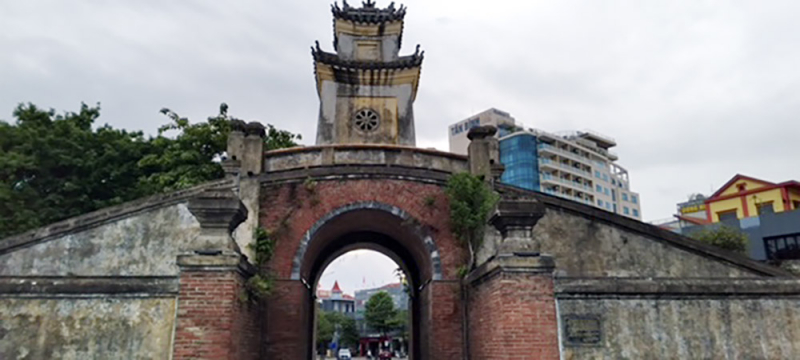
Quang Binh Quan is located in the Luy Thay strategic system.
But the Nhat Le River is always alive and rippling with all the ups and downs of the wars. At the bottom of the river is still imprinted the image of the Cham princess My E's death to keep the relationship with the country and the country (1044). And there is also the image of the river mixing with the tears of Princess Huyen Tran when she said goodbye to her father, King Tran Nhan Tong, to become King Che Man's wife.
The farewell at Nhat Le seaport was filled with tears for the country. This place marks the journey to the South of our ancestors who wandered from all directions. The verses of King Le Thanh Tong resonate like thunder: "The mighty army is forever copying stories of the Tran dynasty/ Tuan Nam now only follows the predecessors/ Expanding the border of thousands of red miles" (1470). The magnificence of the river at this estuary is the soul of history in Quang Binh. The place where modern heroines such as Mother Suot, Nguyen Thi Khiu and Tran Thi Ly were born in the cause of liberating the South and reunifying the country.
Nhat Le became a river of history and a source of poetry. Le Thi May's verses seem to be generalized through images: "The wind from the river overflows Quang Binh Quan/ The wall is gradually falling and its traces are lost/ Blood flows throughout the length of the country/ On one side of Mother Suot's boat are millions of children." (Wind from Nhat Le River). In the past, poet Nguyen Khuyen also stopped by the river to sketch: "The water returning to Nhat Le rushes through many rapids and waterfalls...So many guests on the road to fame and fortune/ Asking who did not pass through the Quang Binh gate" (Via Quang Binh Quan). ).
An interesting mark was when the poet Nguyen Du, who worked as a governor in Quang Binh for four years (1809-1813), was moved by the river: "The water of the Le estuary patted me/ The clear, turbid Kinh flowed endlessly/ Yellow flowers and green bamboo are all silent" (For you). And many writers have said that the poem in the story of Kieu: "Sadly looking at the seaport in the afternoon / Whose boat is looming with its sails in the distance" by Nguyen Du is a description of the scene at Nhat Le seaport. And again, poet Xuan Hoang also expressed his joy: "Nhat Le, my hometown, already has many sails/ Five-colored clouds I send in one sheet/ The sails will go far, our sea is very beautiful/ Our Dong Hoi will be ten thousand times more beautiful more” (Dong Hoi).
Is it “ripe spring”?
The poem "Spring Ripe" by poet Han Mac Tu, who was born in Le My village (now Dong My ward - Dong Hoi city) on the Nhat Le river. That ancient village stretches along the end of the river flowing into the sea. The poet was attached to the river for nearly ten years of his childhood. That's why there are verses in "Nine Spring" that many people think that the childhood scene here is deeply evident. In fact, the reader can easily recognize that "Distant guests met in the ripe spring" is the author somewhere who suddenly remembers the white sand and blue sea and looks forward to a person: "My mind is wistful and I miss my village/ Ms. That year, I was still carrying rice/ Along the sunny, white riverbank." Especially the ending sentence must be the image of the Nhat Le River.
Furthermore, in many other poems, memories of rural rivers and surreal moon hauntings are always decoded with the signal "Outer Space" (Han Mac Tu). It is possible that there are also symbolic images such as "The shadow of the moon climbing the river and touching the pillow" (Staying up late), or "The moon lying down on the willow branch" (Shy), or "The moon was shy when she grew up" ( Magical)... is also a reflection of the moon of the Nhat Le River. I kept wandering along the river in a magical space with echoes of Han poetry. The soul is lightened by "The wind blows the light into the beach / The moon fills the river, flowing smoothly". Indeed, there is a rural soul that always appears in Han Mac Tu's poetry, even in the tragic and indignant moments of the poet's life.
Quang Binh
1424 view
Update day
: 20/10/2023
Vương Tâm


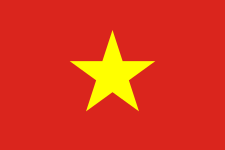 vn
vn en
en ja
ja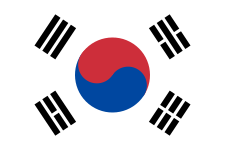 ko
ko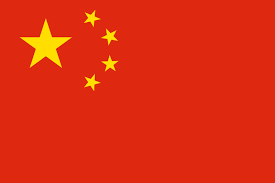 zh
zh


















